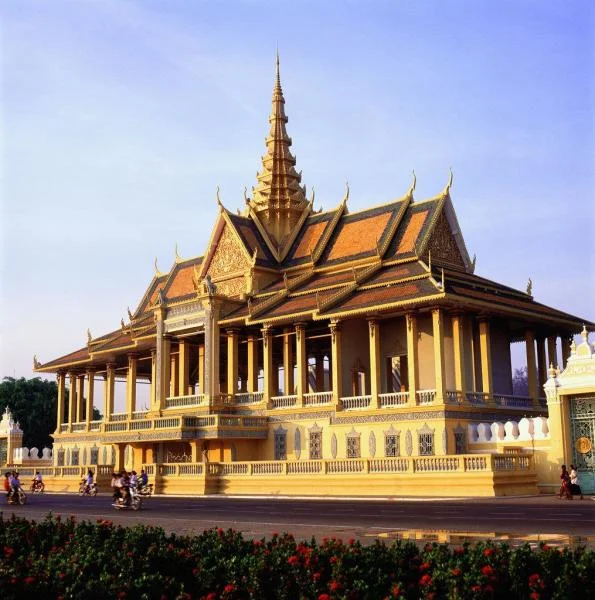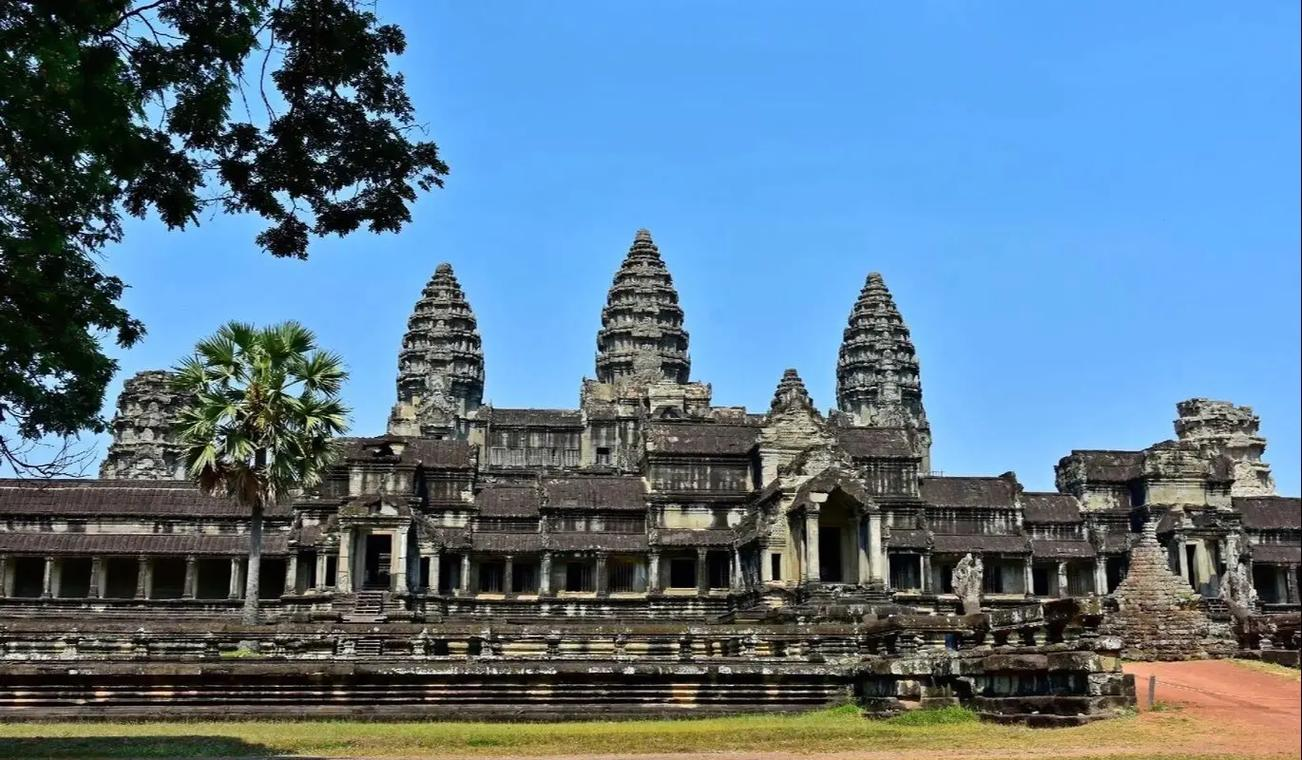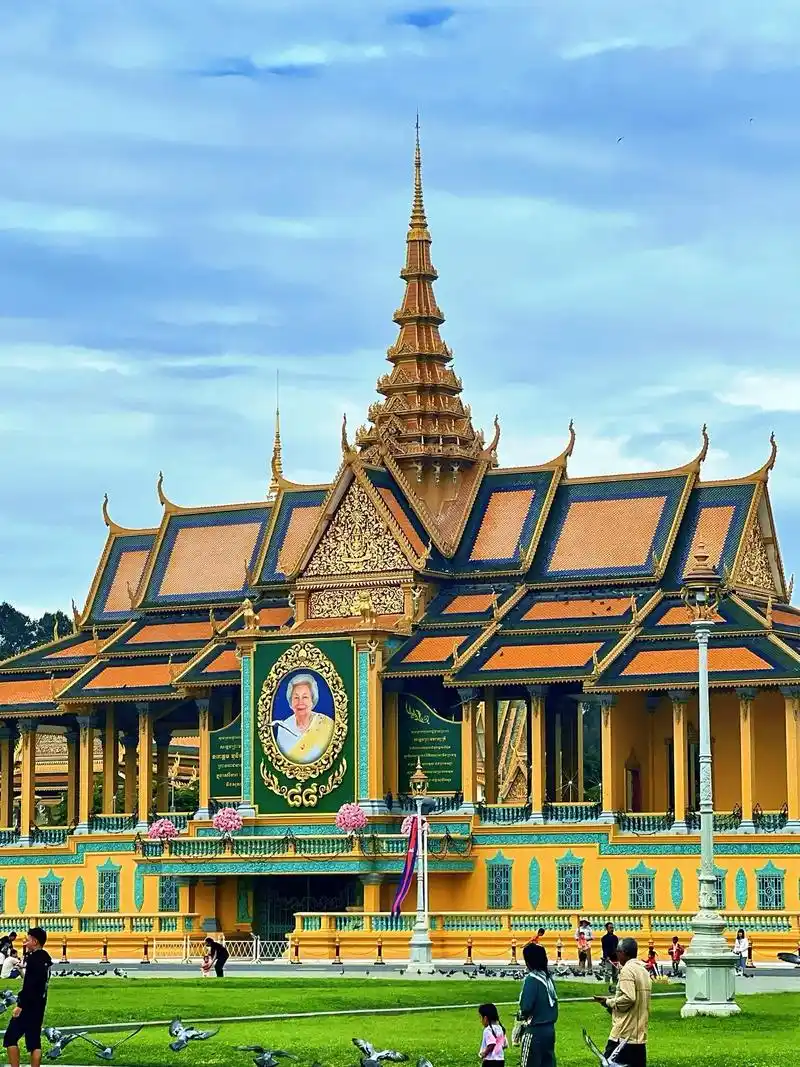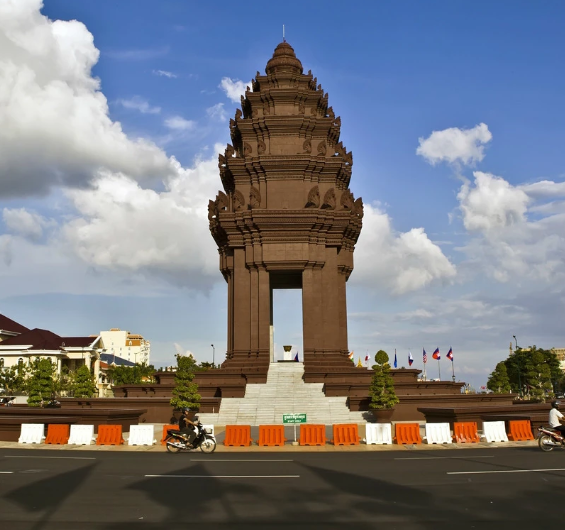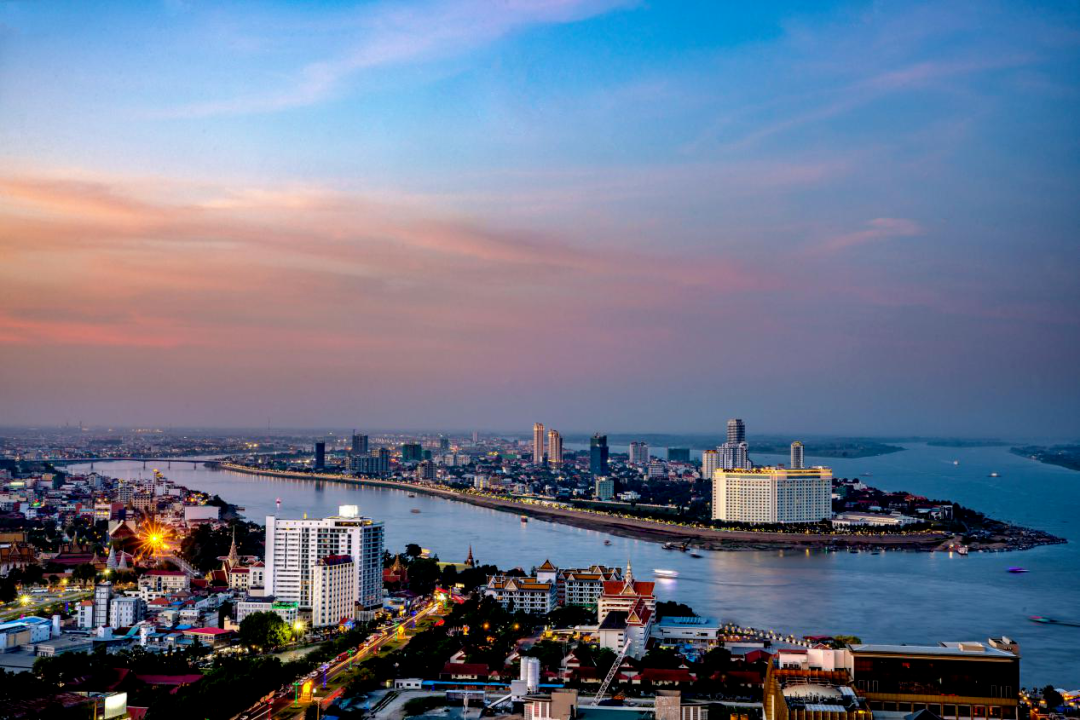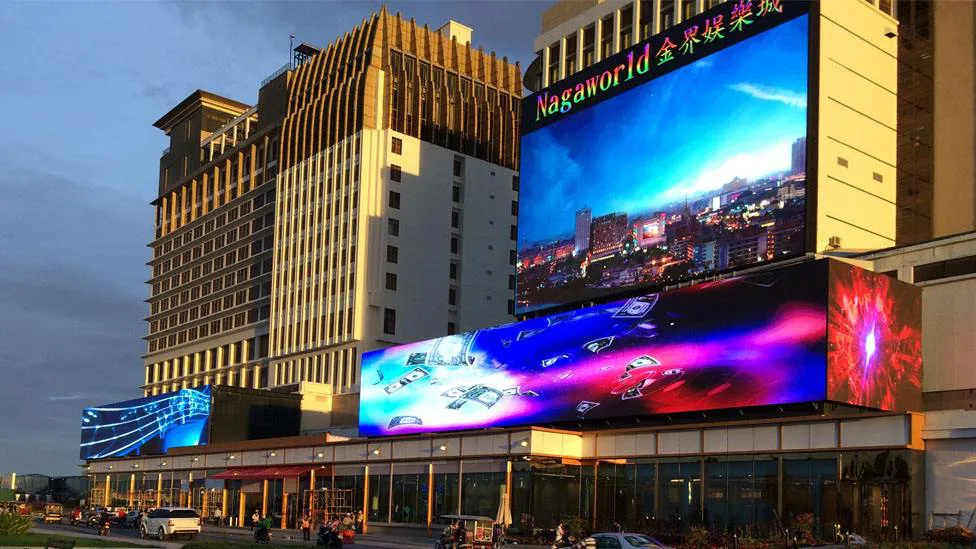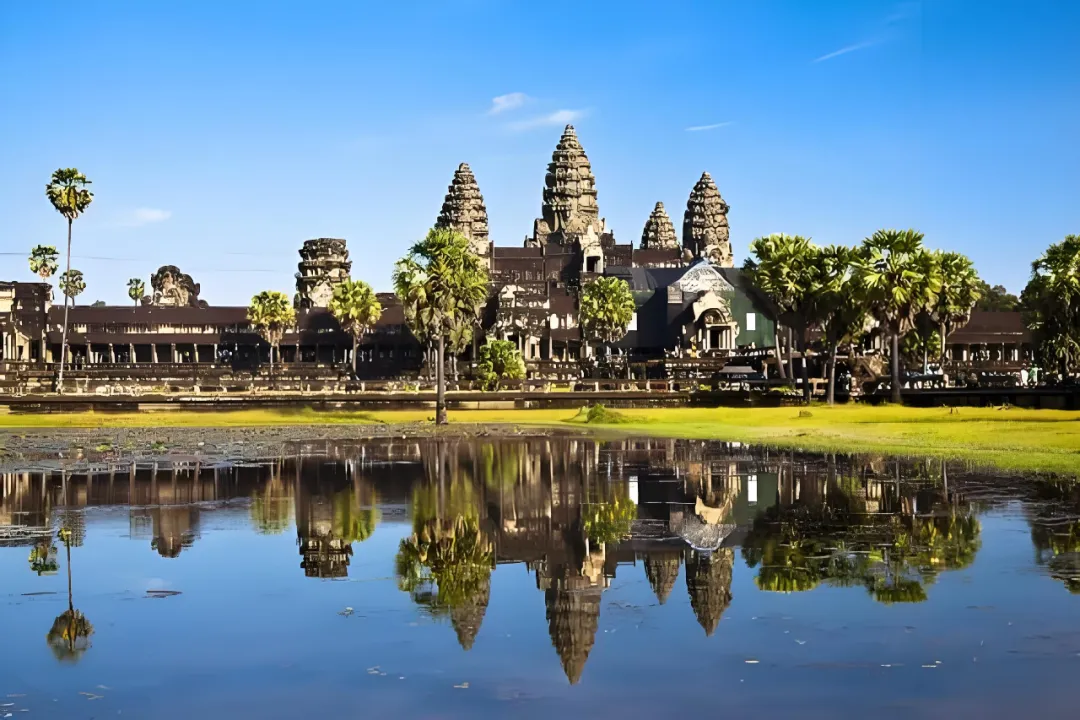Cambodia 04丨Angkor Wat (middle)
The book follows the last chapter and continues the journey of the Angkor dynasty.
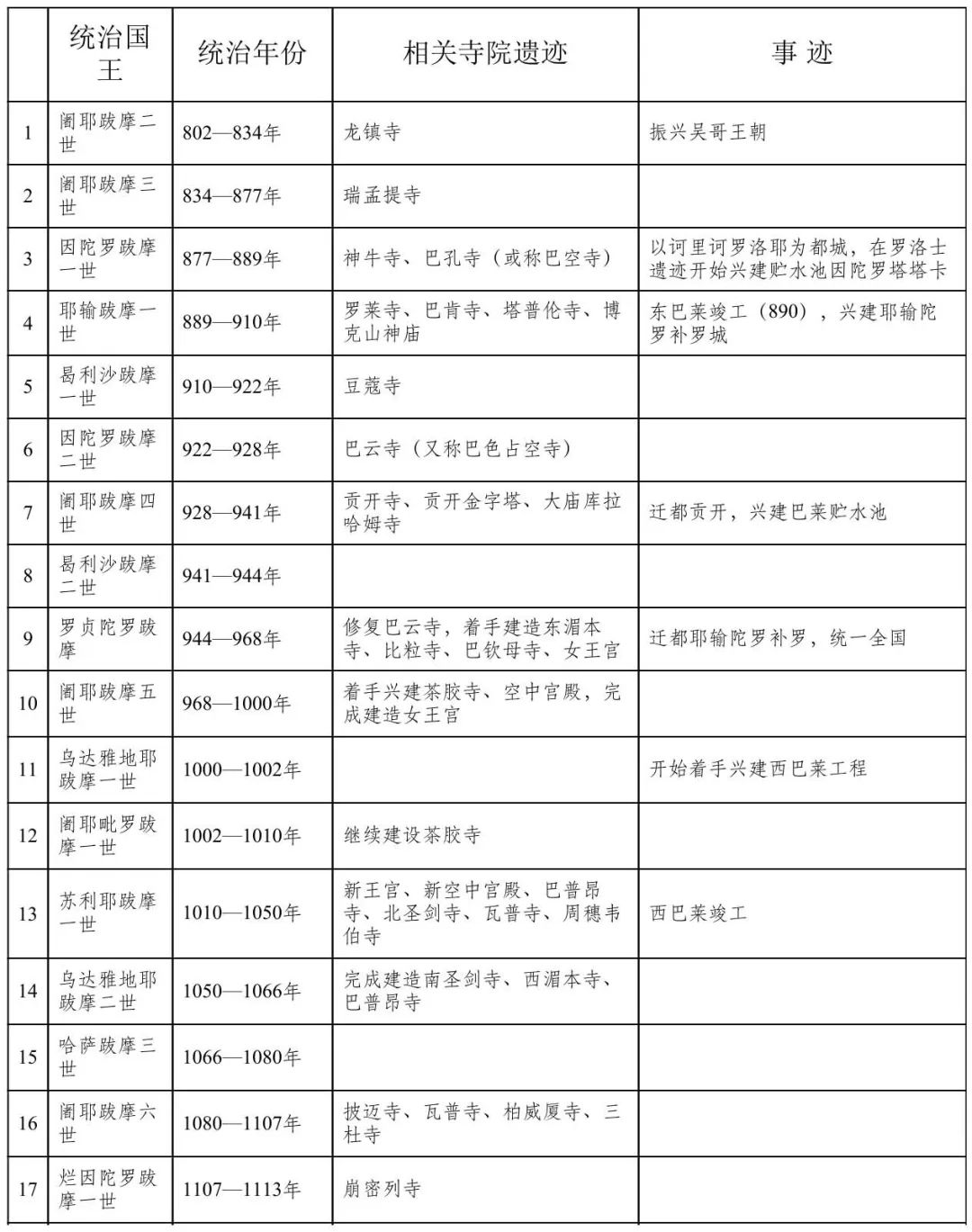
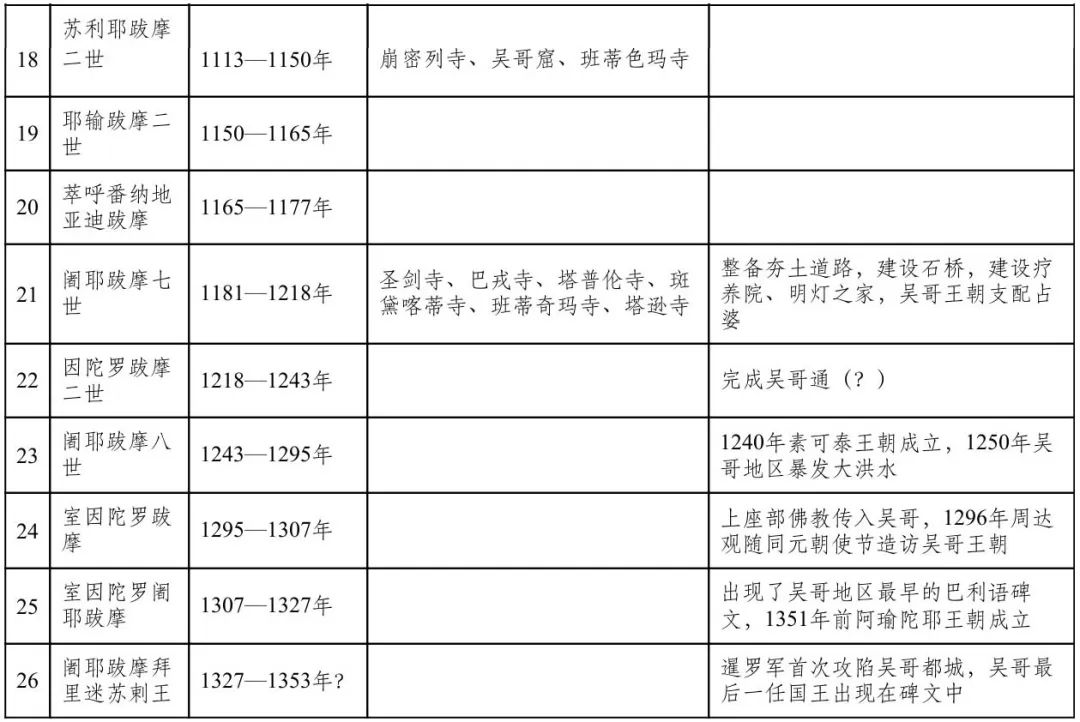
Last time, we talked about the weak regime during the period when the fifth and sixth were in power, and separatist forces in various places rebelled one after another. These include Jayavarman IV, who made Gongkai the capital, won the final victory in the battle for the throne, successfully inherited the throne, which is the Seventh Prince, and moved the capital of the Angkor Dynasty to Gongkai.
[Koh Ker]
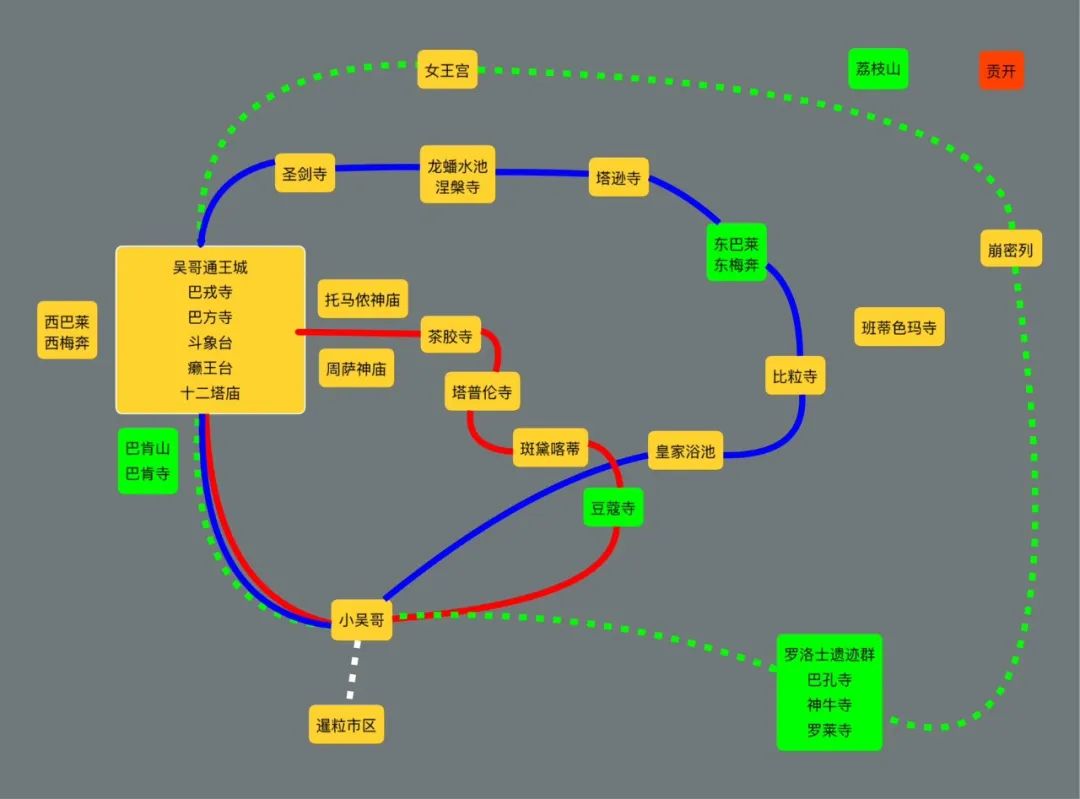
Gongkai is located 125 kilometers northeast of Angkor, further away than Battambang, and is now in a primeval forest. Of course, it is no longer part of the Angkor ruins group, it is a very niche place. Although Gongkai was the capital of Angkor for only a few decades, Lao Qi still built a lot of temples and the Bale project here, and dozens of ruins can still be seen here. The most special and famous one is the "King Kai Pyramid".
Prasat Thom Prang
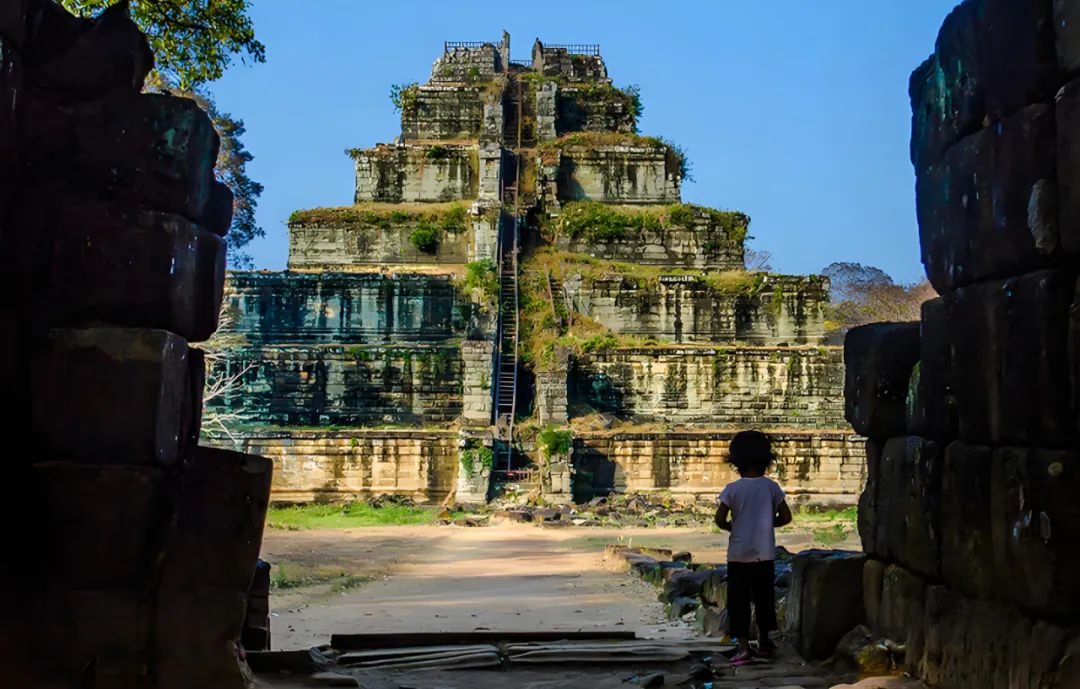
The Gongkai Pyramid is made up of seven layers of sandstone and rock foundations, which is a bit similar to the Mayan Pyramid. It is about 35 meters high, with a steep staircase on the east side that can be up and down, surrounded by brick walls. The top floor was originally a 4-meter-high "ringa" but it no longer exists. There is still a deep hole in the center of the tower top, which leads directly to the ground, and its specific purpose has not been studied yet. It is speculated that it was used for sacrifice at that time, and people would throw the sacrifice from the entrance of the cave to pray for blessings.
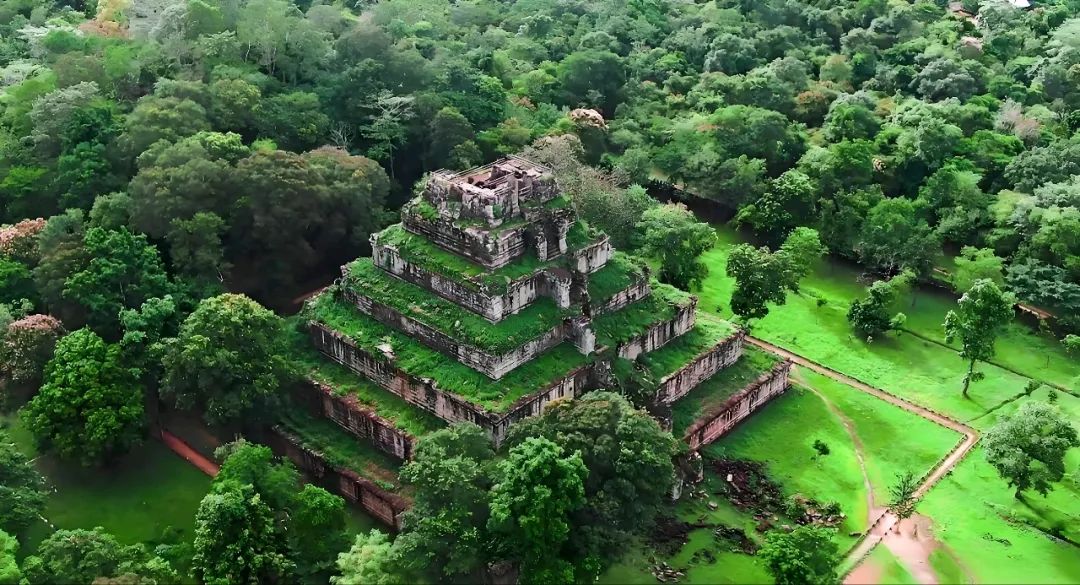
Gongkai is relatively close to Lizhi Mountain, and it is much more convenient to transport stones than Angkor. The stones are abundant, and it is very grand and grand in the architecture. Take the pyramid of Gongkai for example. The huge stones are superimposed on them, and there are no statues on them. The slope is more than 60° and it goes straight to the top of the tower. Standing in front of you, you can't help feeling oppression and awe.
East Mebon
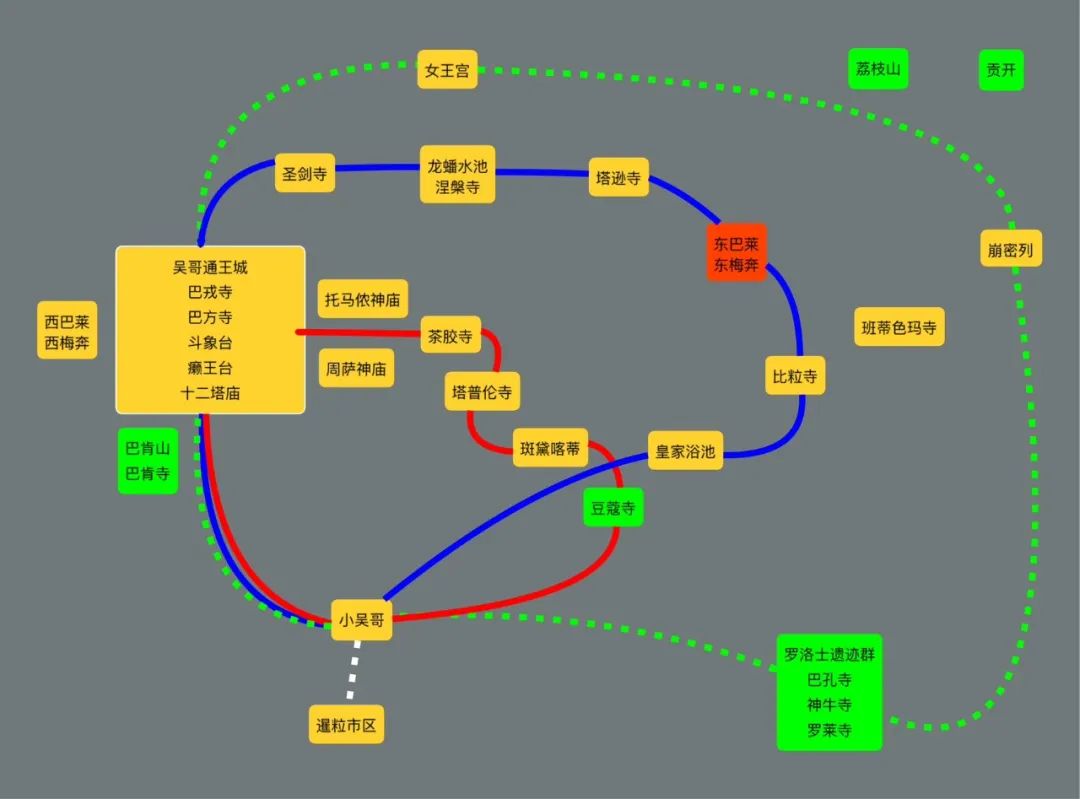
Lao Qi's son Lao Ba did nothing and was overthrown by Lao Jiu after only three years of reign. After Lao Jiu unified the country, he moved the capital back to Angkor Thom, and the short-lived capital Gongkai was buried in the primeval forest.
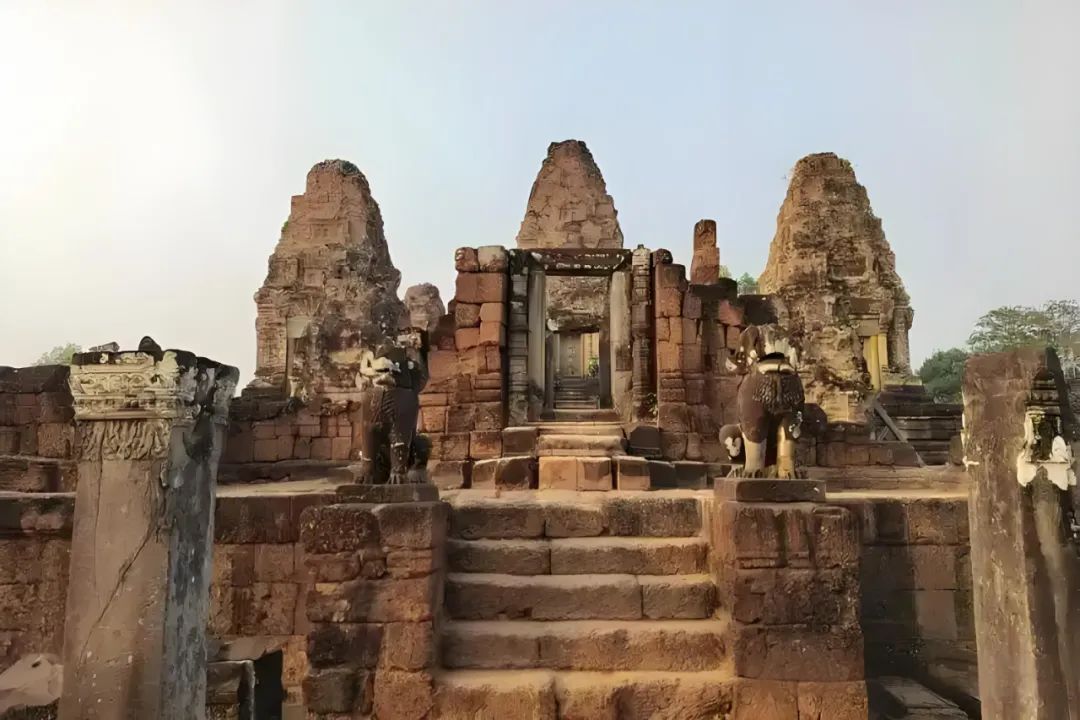
Dongmei Ben Temple was built during the reign of Lao Jiu. It was a temple used by Lao Jiu to worship his parents. The temple is composed of three-layer bases, with two bottom floors with stone elephants at each of the four corners of the bottom floor, and stone lions at the four corners of the top floor. There are five towers built on the top platform, the largest tower in the middle, and the Linga of Lord Shiva is worshipped. The entire temple is made of sandstone and red bricks, with dense holes distributed on the walls, which are supposed to be used to inlaid gems at that time.
Overall, Dongmei Ben Temple is somewhat concise, and the most special thing is that the original temple was built on a small island in the center of Dongbalai water storage pool. There are wide pools around it, which should be spectacular. Now that Dongbalai has dried up, Dongmeiben Temple can only stand alone on the lake bed that has become a farmland.
Pre Rup
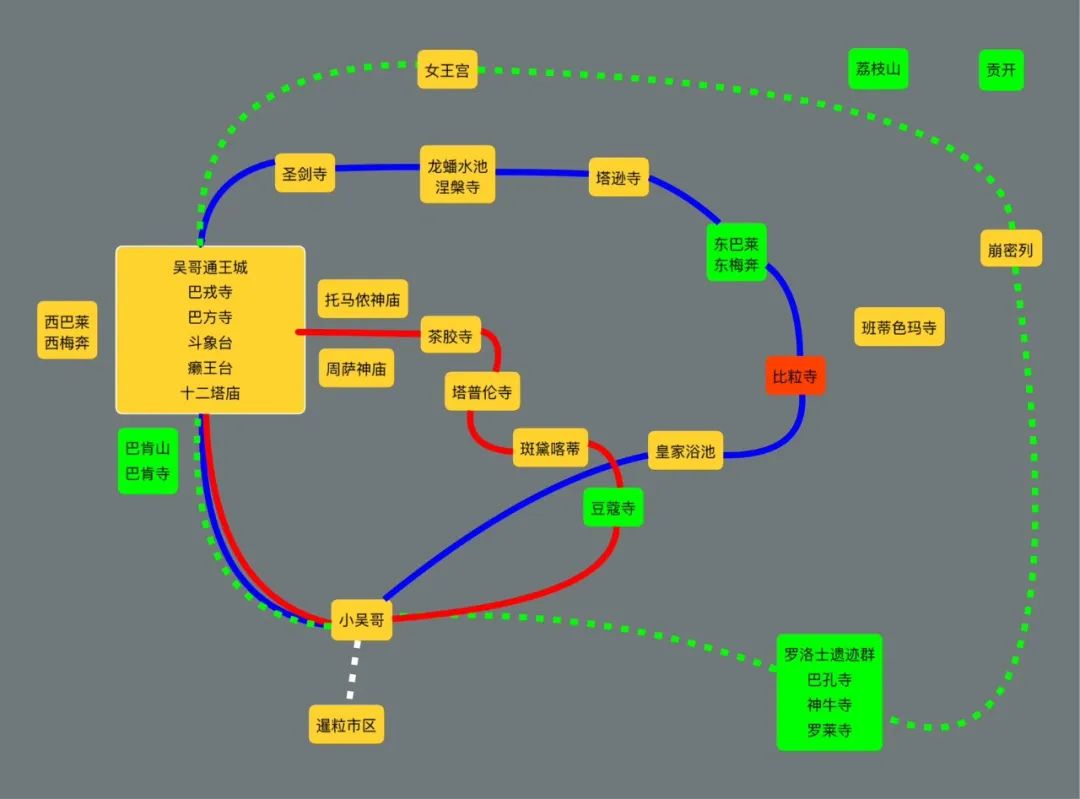
Bili Temple is located about 1.5 kilometers south of Dongmeiben Temple. It is a national temple built by Lao Jiu. Similar to the structure of Dongmeiben Temple, it is also composed of sandstone and red bricks, and it is also a three-story foundation and five towers, but the scale is even larger. The overall height reaches 50 meters, which is the commanding height of this area and one of the excellent attractions to watch sunrise and sunset.
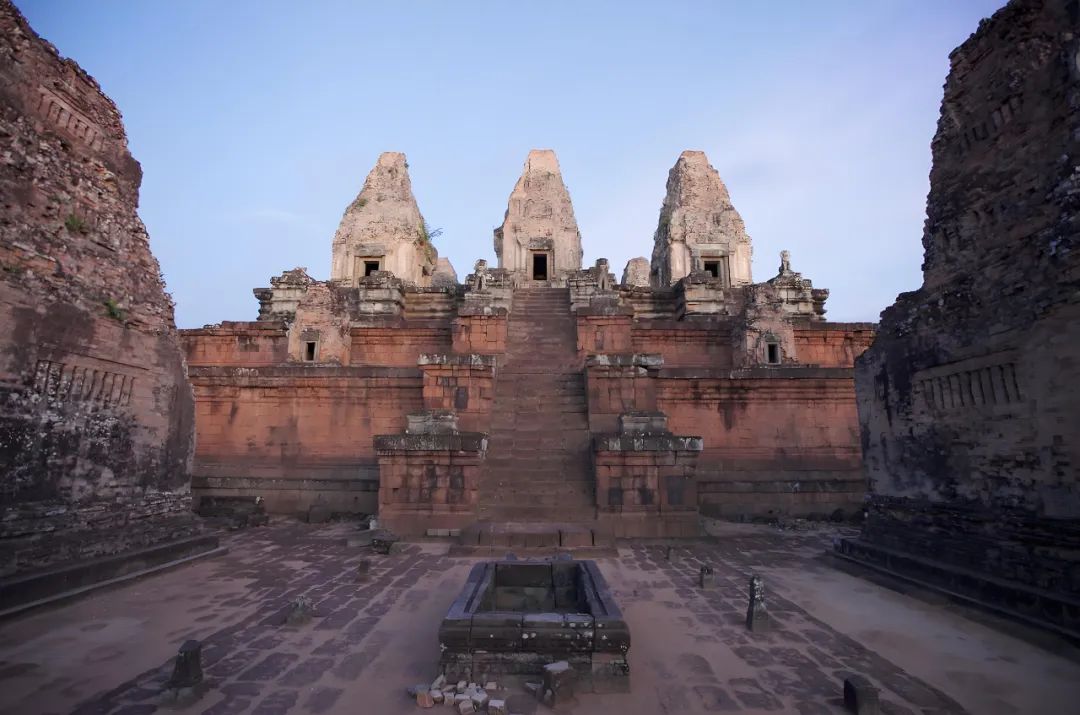
The original Bili Temple was built as a national temple and Lao Jiu died halfway through the construction, so Bili Temple shouldered another core function - the royal cremation ceremony. In Brahmanism, cremation is a key ritual to separate the soul of the deceased from the body and ascend to the divine realm. Therefore, Bili Temple is also called the "transformation tower". The temple faces east and has a square stone trough built in front of the door, which is said to be the main place for cremating the remains. They will put the body head toward the east and feet toward the west into the stone trough. The east is the direction where the sun rises, symbolizing the "soul ascends to heaven." After the cremation is completed, the ashes will be rotated in a specific direction, which will imitate the cosmic view of "life and death" in Brahmanism, help the souls of the deceased get rid of the constraints of the body and realize "transformation" into a god.
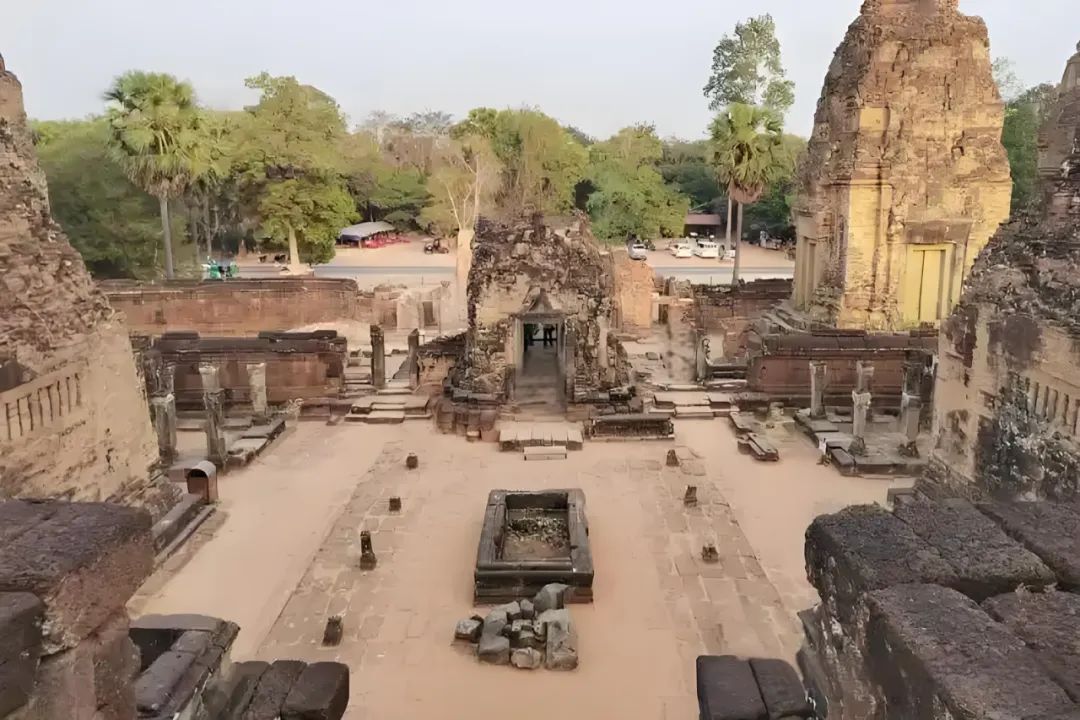
The Queen's Palace (Banteay Srei)
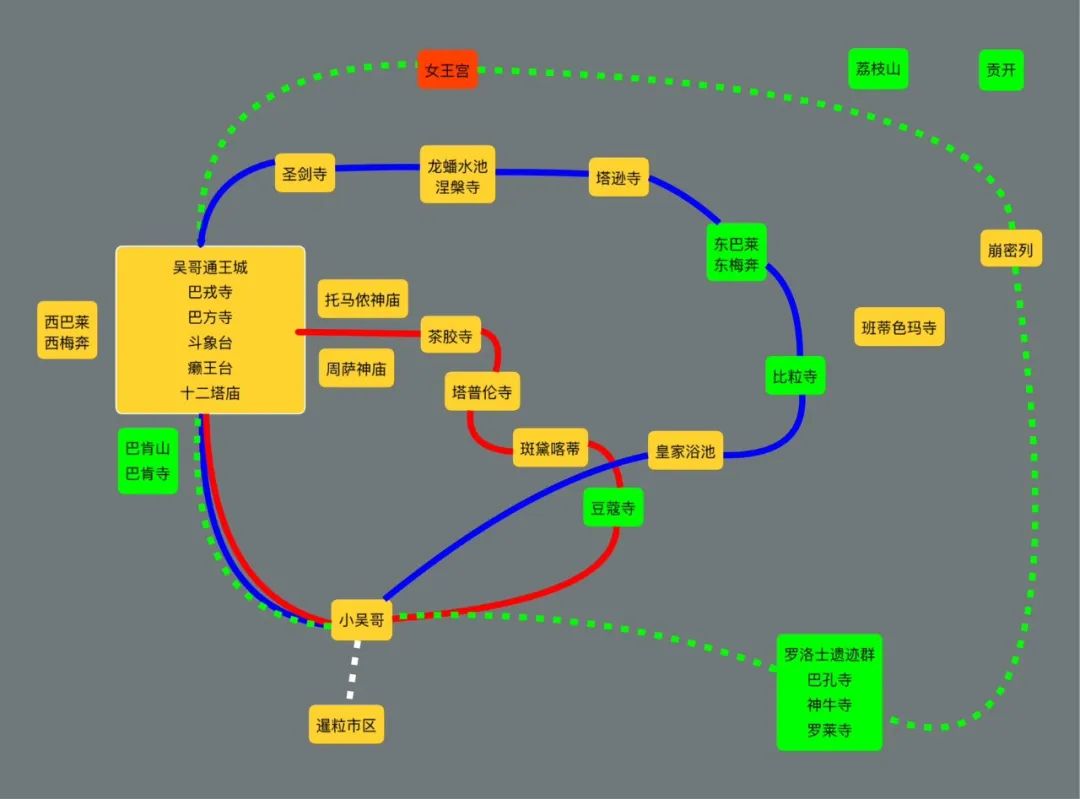
This is an exquisite temple located 25 kilometers north of Angkor Wat. It was also built during the reign of Lao Jiu. It took a total of 35 years and was not completed until Lao Shi succeeded to the throne. Unlike other buildings, the Queen's Palace has a very small and compact structure, and is even better in relief art. It can be said that its skills are the most exquisite in the entire Angkor Wat, so it has the reputation of "Diamond of Angkor Art".
Let’s first talk about the origin of the name of the Queen’s Palace, which comes from the “feminine” artistic label. At the end of the 19th century, when French archaeologists discovered the Queen's Palace, the carvings were too exquisite, and the Queen's Palace used special red sandstone (containing more manganese elements), which showed a pink tone in the sun, which triggered the speculation whether it was a female royal family living. But in fact, the Queen's Palace has no connection with women. The reason for its superb relief skills is that it was convened to build the top carving and stonemasons in the country at that time, and the purpose was to be used for Lao Jiu's national teacher's practice.
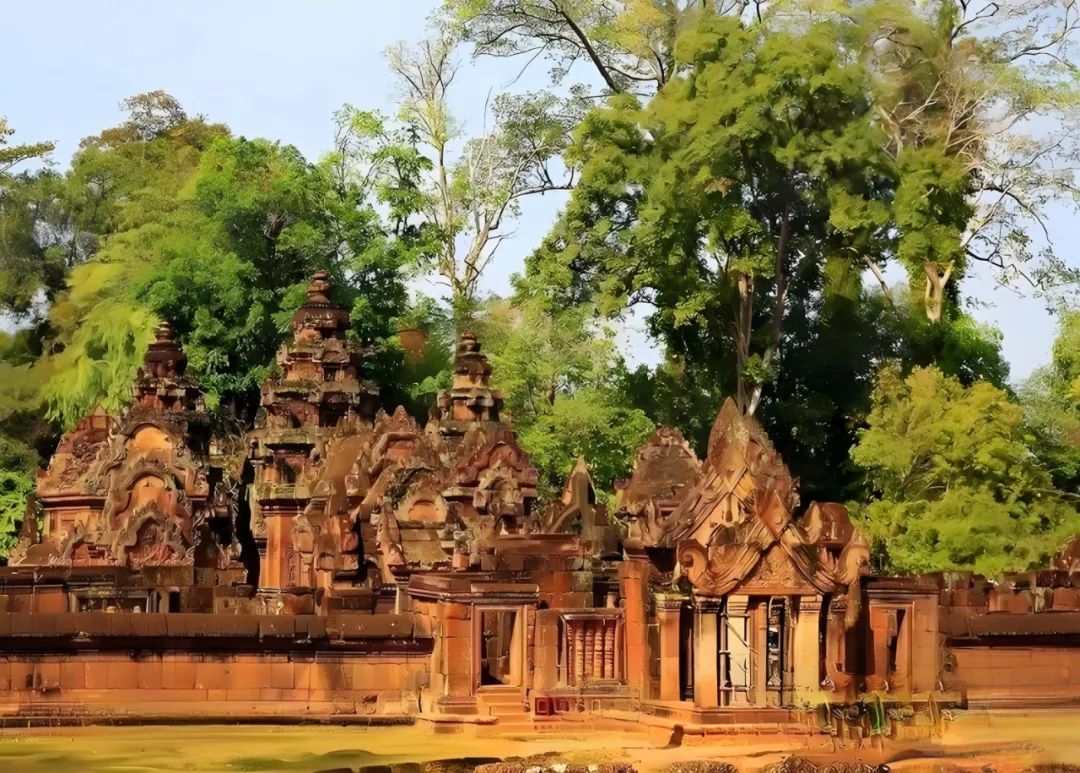
The picture shows the full picture of the Queen's Palace
Perhaps because it is not a national temple, the overall scale of the Queen's Palace is very small, and the longest from the East Tower Gate to the West Tower Gate is only about 200 meters. In such a small space, there are also exquisite structures of three circles of corridors and three main towers. It is also different from the pyramid-like temple. The Queen's Palace is flat as a whole, and the central tower is only 1 meter of foundation. The temple uses delicate texture red sandstone, which is softer and more suitable for carving than green sandstone. This also creates the relief coverage rate of the Queen's Palace to reach more than 90%, spread throughout every corner of the temple's surface.
The focus of the relief of the Queen's Palace is on the "door". "Gate" plays an important role in Angkor architecture and is called "Gopura", which originates from the Sanskrit word "Gate of the Cowl". The gate is a symbol of the sacred space, symbolizing the process of entering the divine realm from the secular world. Therefore, the craftsmen would arrange the most divine carvings around the door, especially the "gable wall". The gable wall is located above the door frame. It is a large stone slab with a span that exceeds the door frame. It is majestic. The Queen's Palace is also the first temple in Angkor's history to carve myths on the gable wall. Let's enjoy it together.
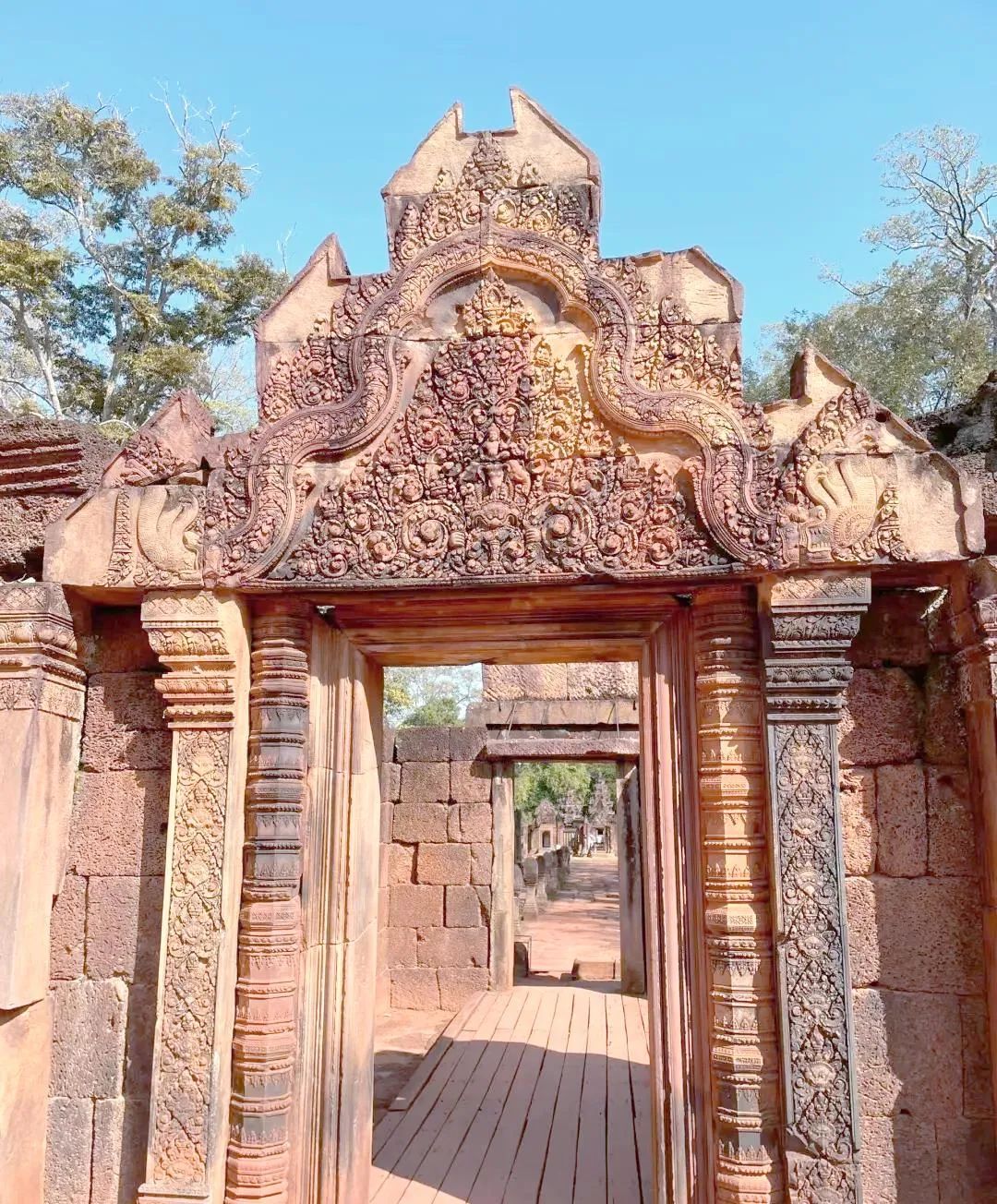
door: Like most temples, the Queen's Palace faces the east, and the east gate is the main gate. The west gate had collapsed, and the mountain wall of the east gate was carved with Indra, who was guarding the east by Brahmanism. He sat upright on the white elephant with three heads.
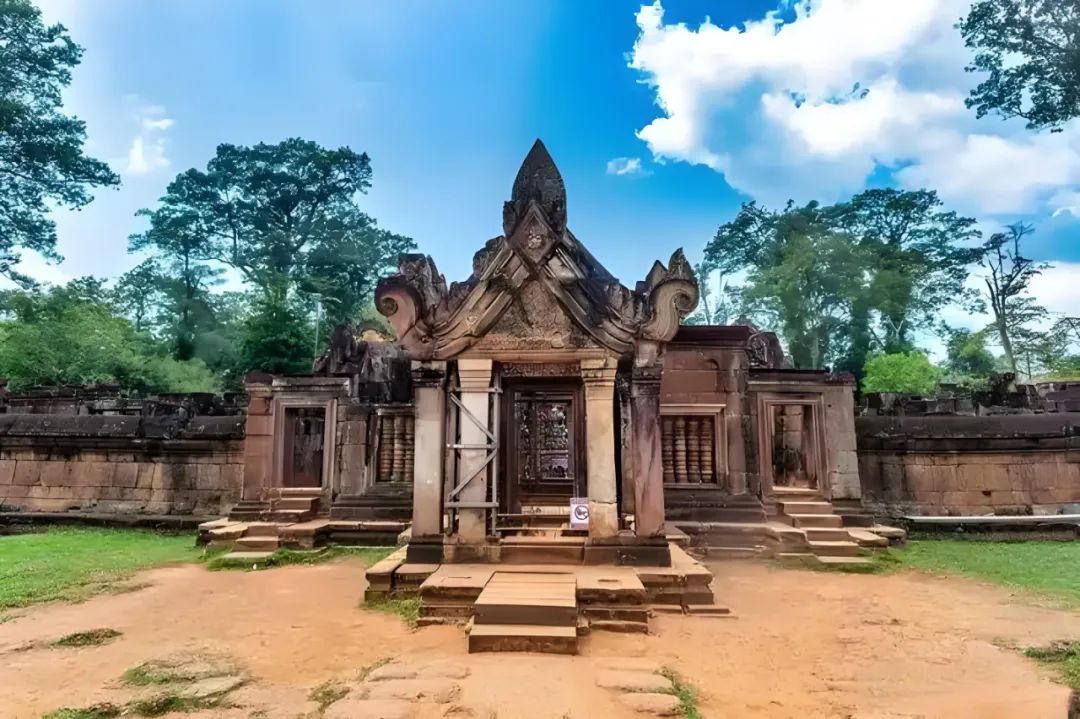
The third corridor: The third floor corridor is also divided into two doors, east and west. Siqubro is now collected by the Ji American Asian Art Museum in France. It depicts the story of the two brothers Sun Tu and Upsuntu, who are both Asuras (demons), who are both Asuras (demons), and are fraught in order to compete for the peerless beauty Feitian Tilotama; Dong Qubro is now scattered on the ground, depicting the story of the demon Rabona in another Indian epic "Ramayana" that greedy for beauty and plunder Sita, the wife of Rama, the prince of Ayudah.
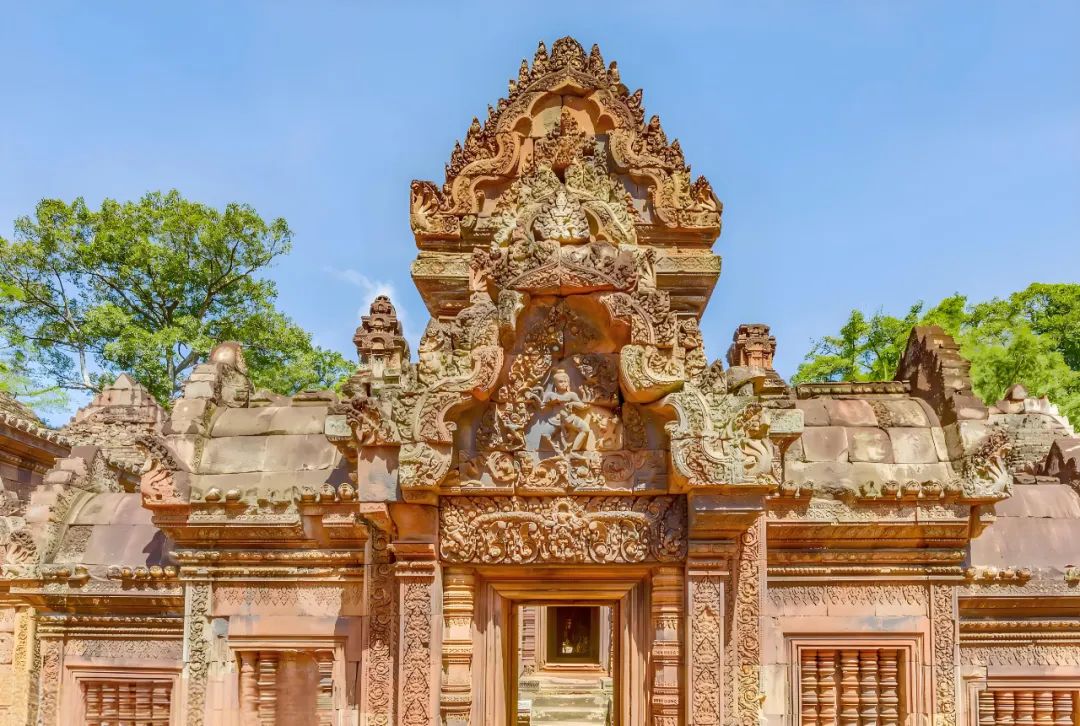
Second corridor: The second floor corridor is also divided into two doors. Xiqubro depicts the story of Prince Rama holding a bow and arrow to help the monkey king Sujilipo shoot his brother Polin; while Dongqubo, the dance god Shiva carved on the outside, and the Brahman goddess Durga on the inside.
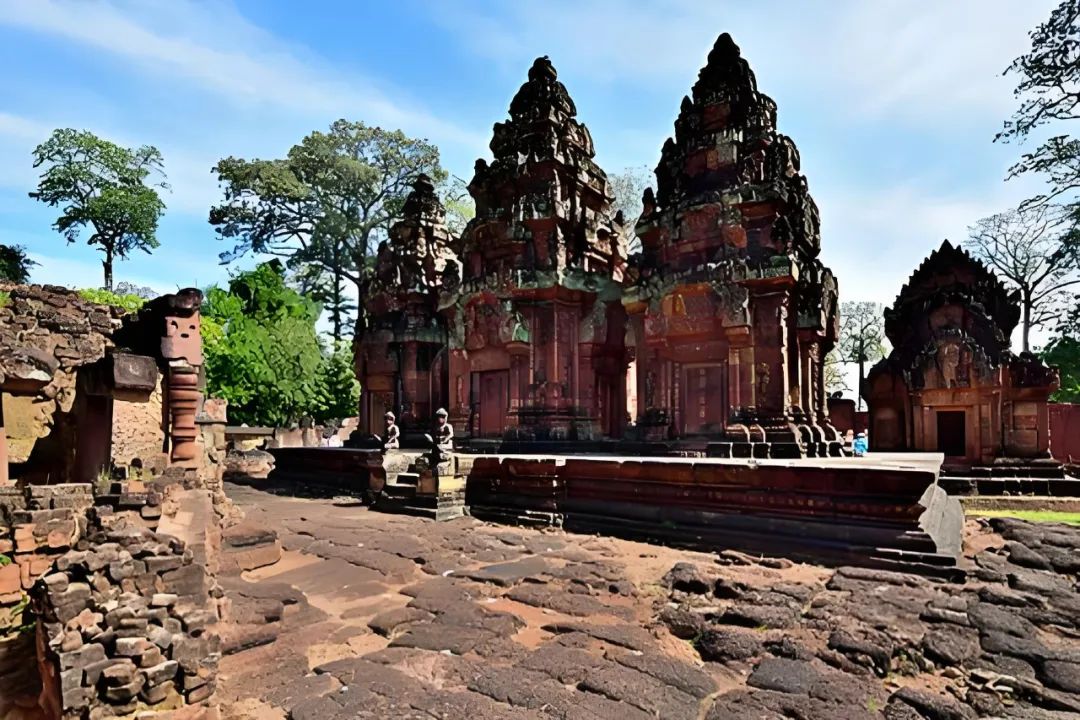
In the center of the Queen's Palace are three towers built on a 1-meter-high base, lined up from south to north. Each tower gate is only 1.2 meters and you need to bend down to enter. The tower in the center is the highest, about 10 meters, and is worshipped by Lord Shiva, the tower in the south is worshipped by Brahma, and the tower in the north is worshipped by Lord Vishnu. It is worth mentioning that on the outside of the southern tower, the goddess "Devata" with the beautiful name of "Mona Lisa of the East", which combines the perfect female image of Brahmanism and Angkor local culture, and is a concrete expression of female divinity.

The picture shows the goddess Tivada on the south tower of the Queen's Palace
There is a Sutra Building built in each of the northeast and southeast to store religious documents. In addition, there are some symmetrical side halls in this area, as well as some stone screens and stone platforms, which are mainly used to hold religious ceremonies. They are not only engraved with myths, but also some secular life scenes.
Ta Keo

Chajiao Temple is the kingdom of Lao Shi, located on the banks of the Siem Reap River on the east side of the King of Angkor. It is the first temple in Angkor history that was completely made of sandstone. The same traditional pyramid structure and Mount Sumeru are structured by five-story foundations and five towers. The highest platform is 22 meters and the highest tower is 12 meters. Of course, this is all just the norm. The most special thing about Chajiao Temple is that it has not been completed and is an unfinished project.
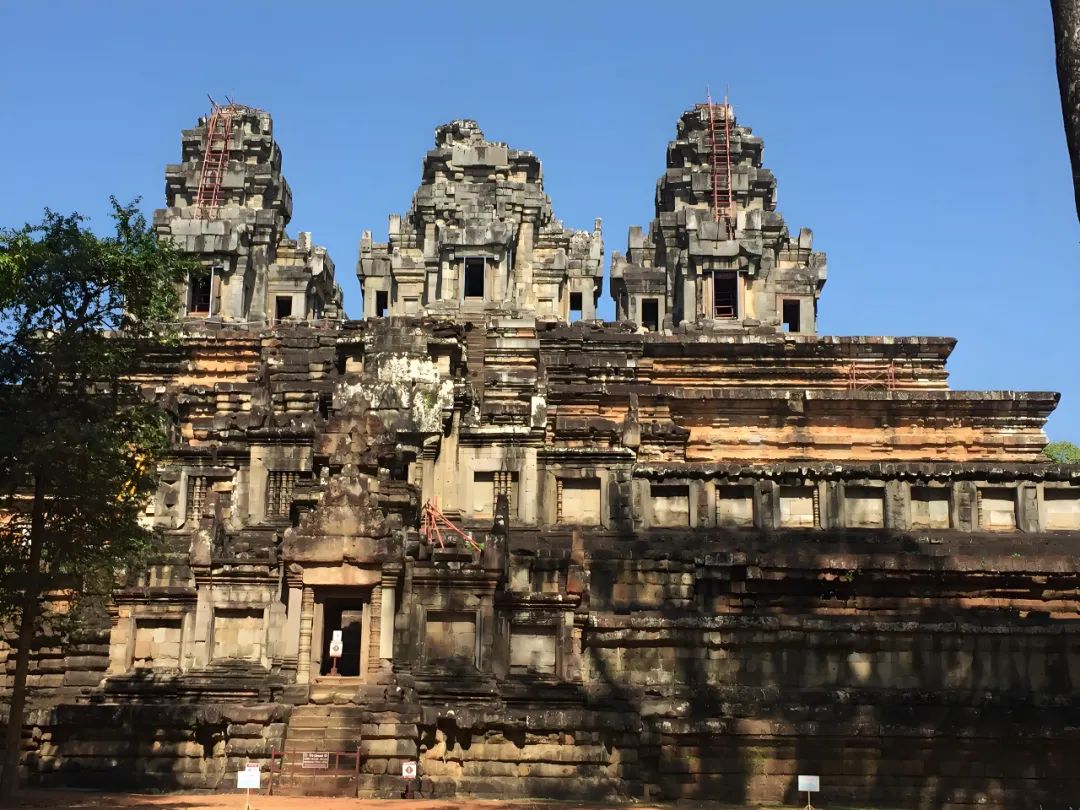
The reasons for not completing are many consequences. In the 12th century inscription, it is recorded that lightning strikes were encountered when the Chajiao Temple was built, which was regarded as a divine punishment and the project was forced to be interrupted. Another reason may be that after Lao Shi's death, the country fell into a civil war again and had no time to take into account the construction of temples. In addition, the difficulty of building a whole sandstone temple has increased sharply, and the technology has encountered a bottleneck. For various reasons, Chajiao Temple was not completed, but it provided rich materials for later generations to study Angkor architecture, especially the construction process.
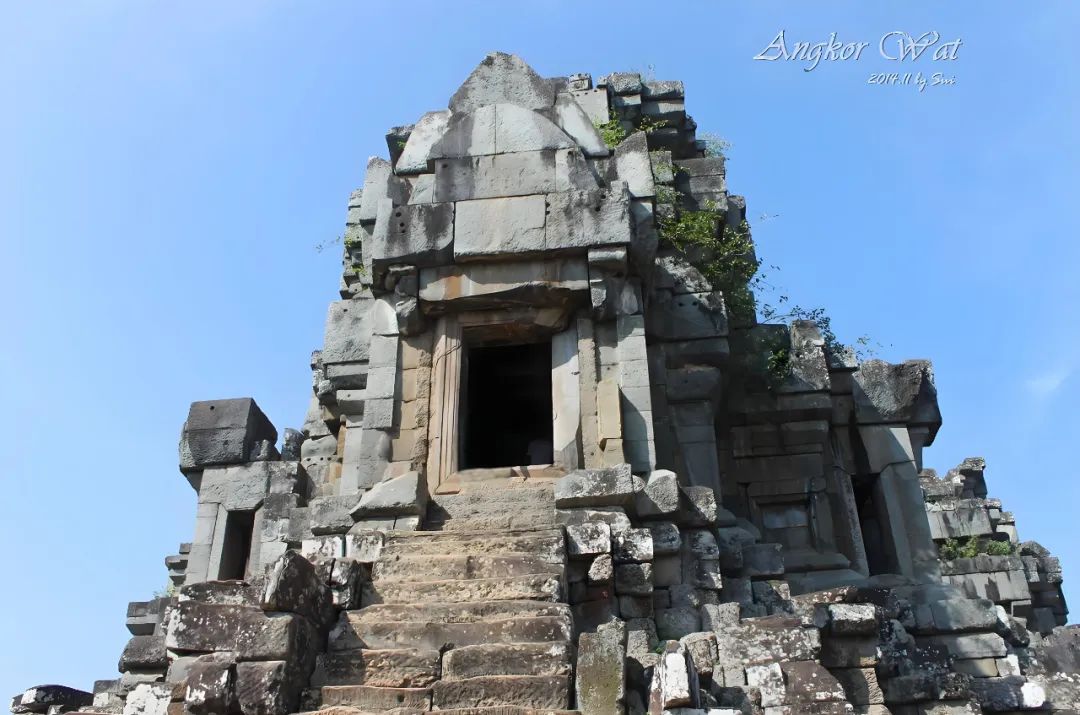
Unpolished stone can be seen on the tower, as well as holes reserved for mortise and tenon structures. As well as the marking lines portrayed by craftsmen, etc., it seems that time and space have traveled 1,000 years ago, giving people a sense of uncarved and extensiveness.
West Baray and West Mebon
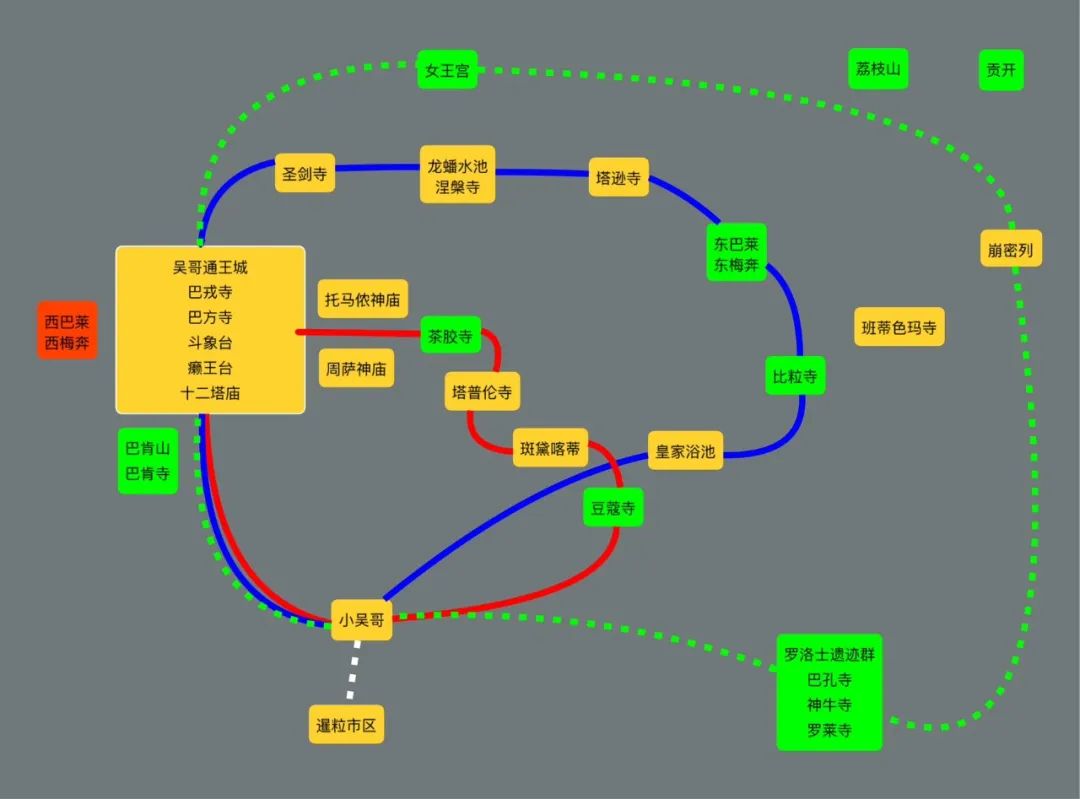
After Lao Shi's death, he entered a chaotic world again. After a brief and turbulent era of Eleven and Twelve, Angkor finally ushered in an infrastructure madman "Thirteen". Thirteen reigned for 40 years, built many temples and projects, which also laid the foundation for the prosperity of Angkor later.
Among the many projects, Sibale is the most important. Sibale, which took 30 years to complete, is the largest reservoir in Angkor and the only water conservancy project that can continue to supply water during the dry season.
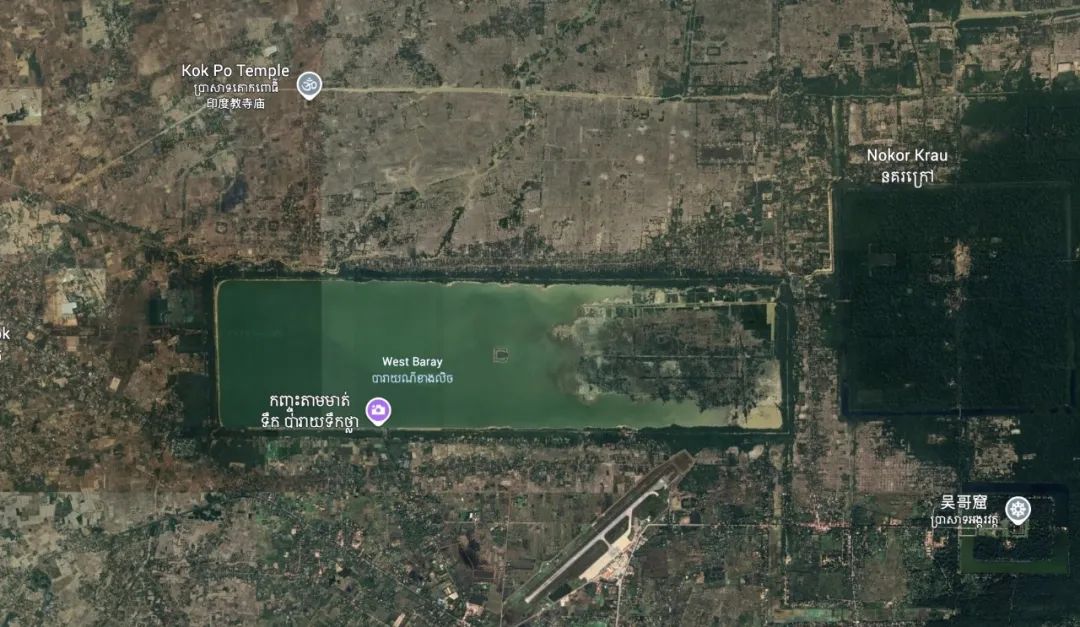
Sibale is located on the west side of Tongwang City, about 8 kilometers long and about 2.2 kilometers wide, with a total area of 1,600 hectares, equivalent to the size of 2,240 standard football fields. The entire embankment is made of rammed earth and is about 7 meters high. Sibale introduced the river water of the Siem Reap River through the canal, and then irrigated the surrounding farmland through the water system, supporting rice cultivation in the Angkor region, making Angkor the earliest civilization in Southeast Asia to ripen twice a year.
However, due to natural siltation and artificial transformation, the area of Sibale has been reduced to 8 square kilometers and the depth is only about 2 meters. Some dams are still clearly visible, but the canal system is already covered by dense jungle.
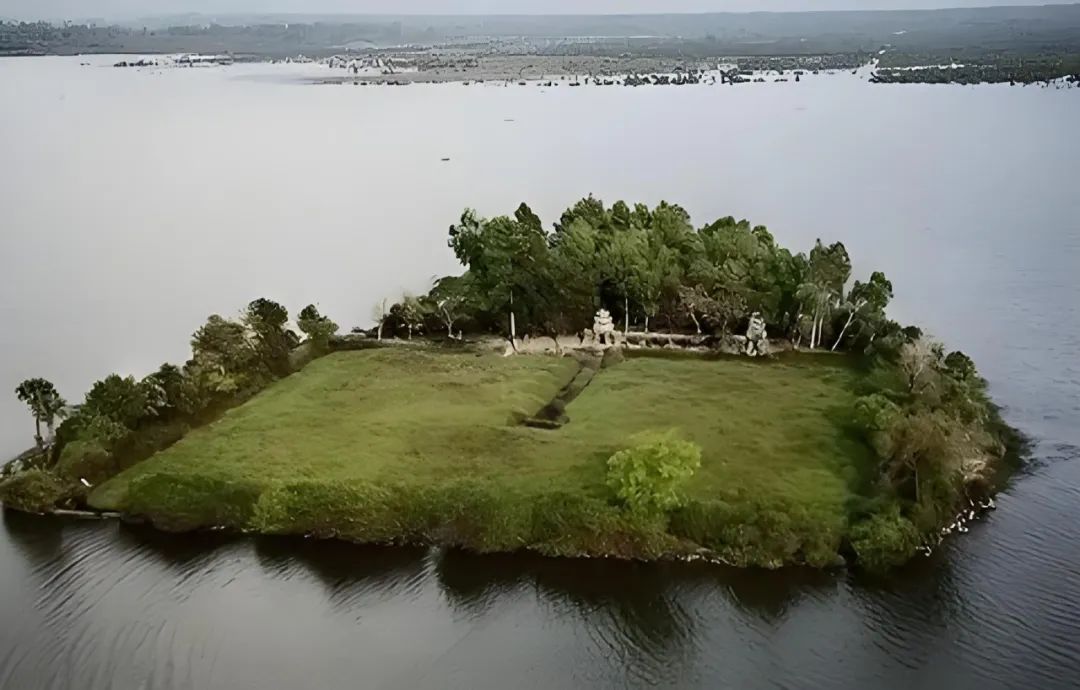
There is a small island built in the center of Xibale Lake. On the island is Ximeiben Temple, which corresponds to Dongbale and Dongmeiben Temple. The same three-story foundation and five tower structure are special in that it worships not God Shiva, but Vishnu. In the main tower, there was once a bronze statue of Vishnu lying on the cosmic snake, which was 4 meters long, which is now hidden in the Phnom Penh National Museum.
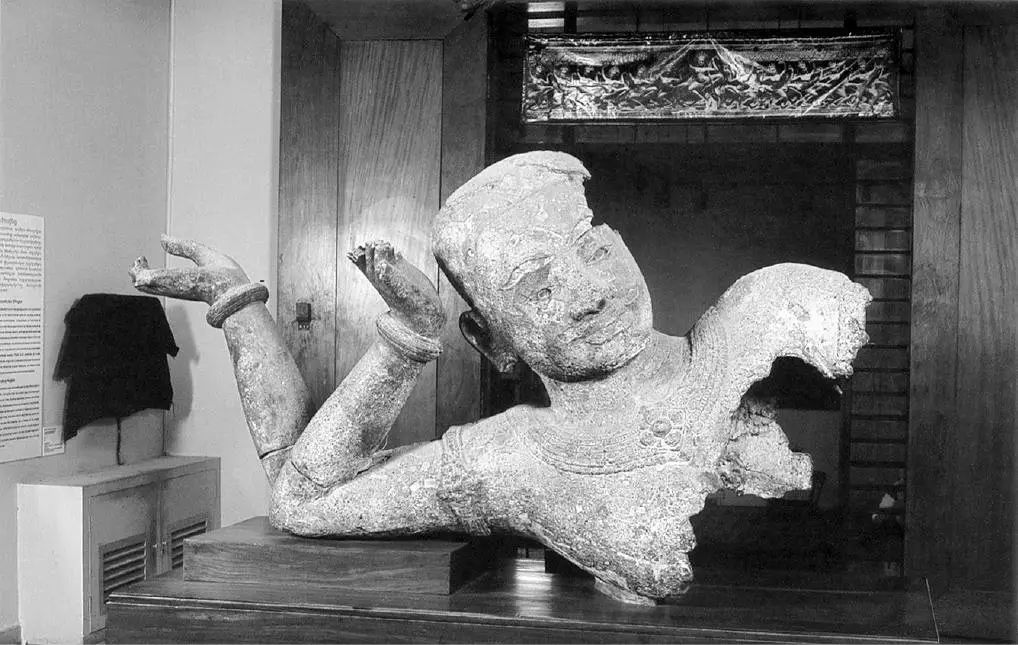
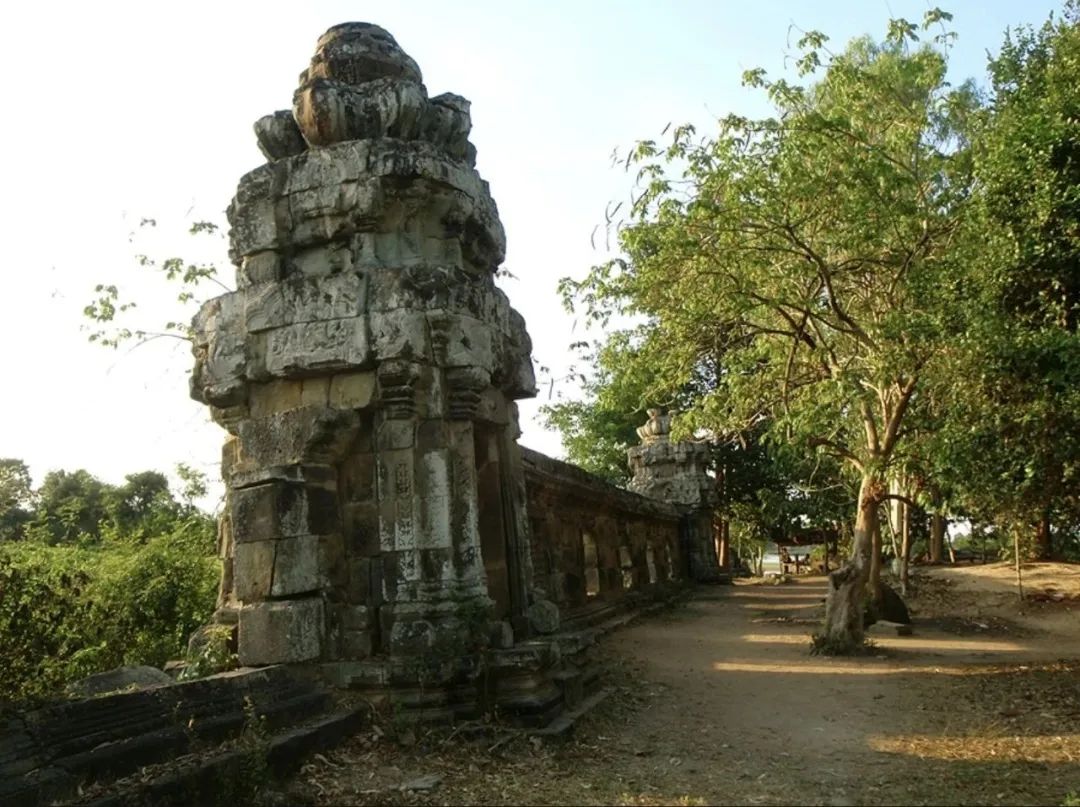
The picture shows the tower of Ximei Ben Temple, which was tilted by 8° due to the settlement of the island.
Finally, it is said that Sibalai and Ximei Ben Temple are not included in Angkor tourist attractions. Natural erosion has caused the temple to settle and tilt. In addition, it was bombarded during the Civil War, which was severely damaged, which is very dangerous.
Baphuon
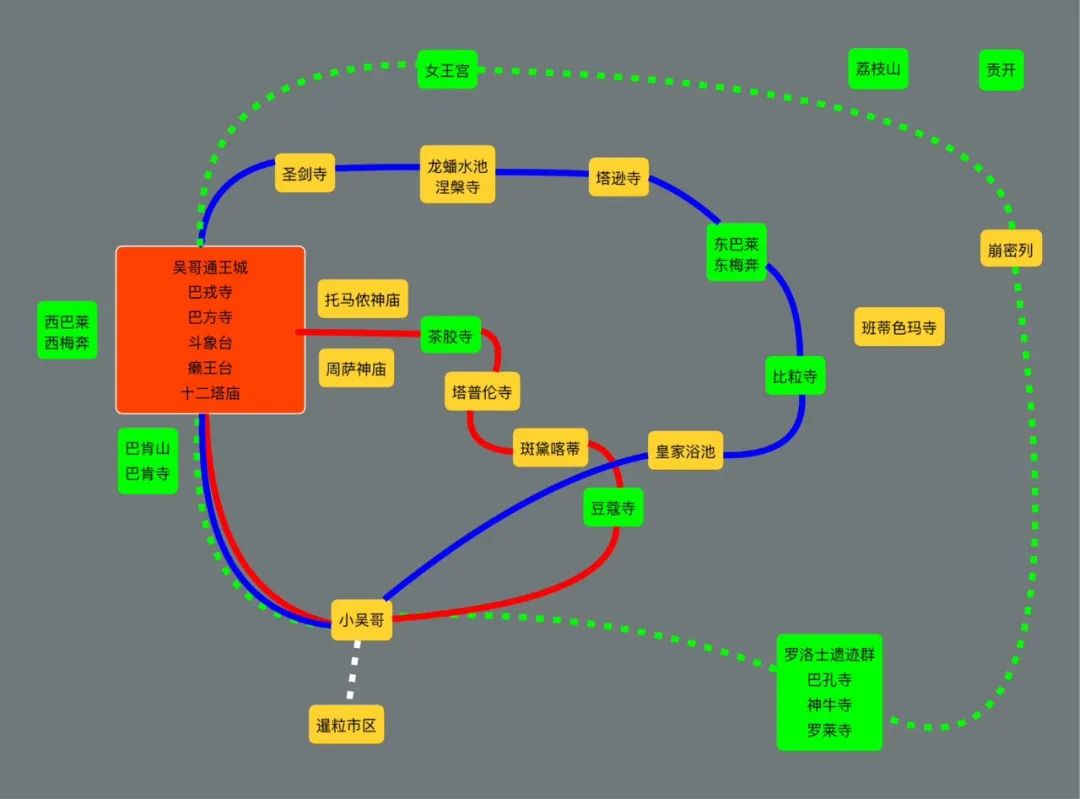
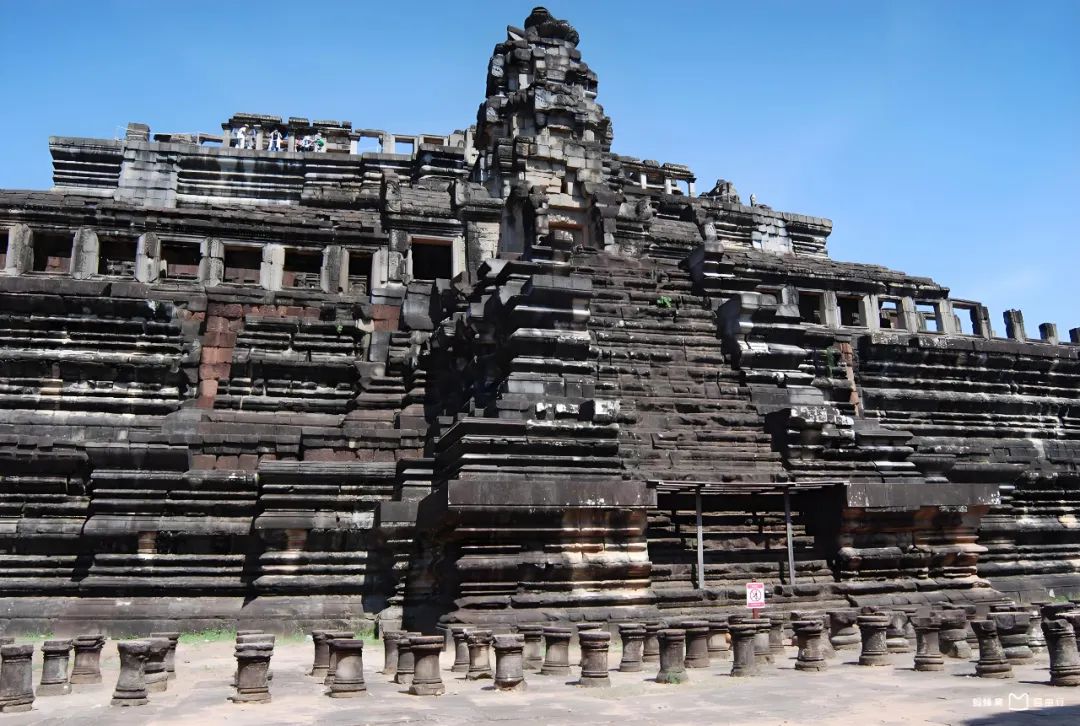
After Thirteenth death, the Angkor Dynasty fell into war again. Despite this, during the fourteenth reign, a large ornate temple, Bafang Temple, was built.
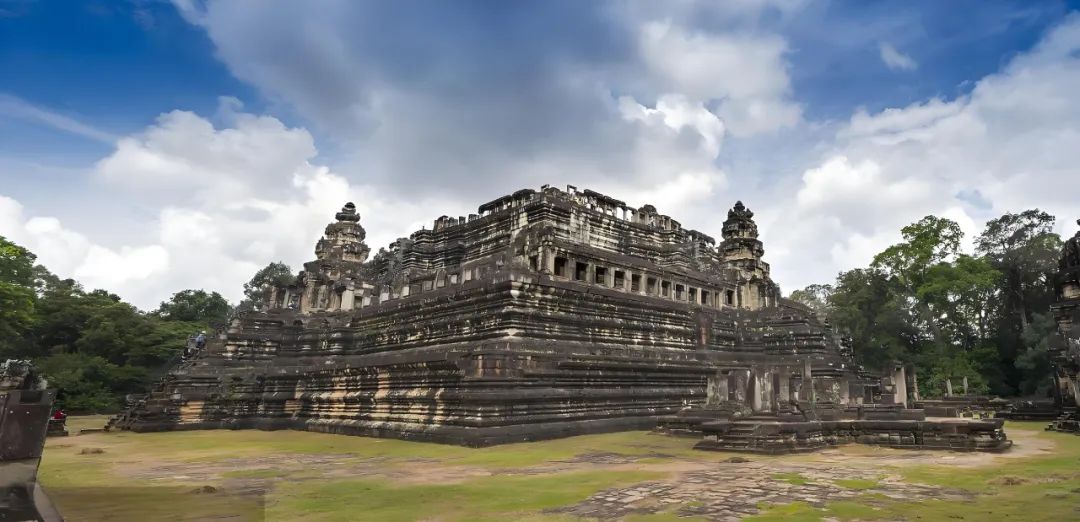
Bafang Temple is the fourteenth national temple, located in the present King of Angkor Tong. The same five-story fund pyramid structure, but with a larger specification and a height of 50 meters. Different, there are corridors built on the extensions of the 1st, 3rd and 5th floors, which are used by the civilians, priests and royal families respectively, with a very strict hierarchy. A towering copper-capped stone tower is built in the center of the top platform. But the stone pagoda was demolished in the 15th century, and the copper material was used to make a reclining Buddha, leaving only four stone doors standing there. The reclining Buddha built is currently on the west side of the temple, 70 meters long and 9 meters high, which also witnesses the subsequent transformation of religious beliefs of the Angkor Dynasty.
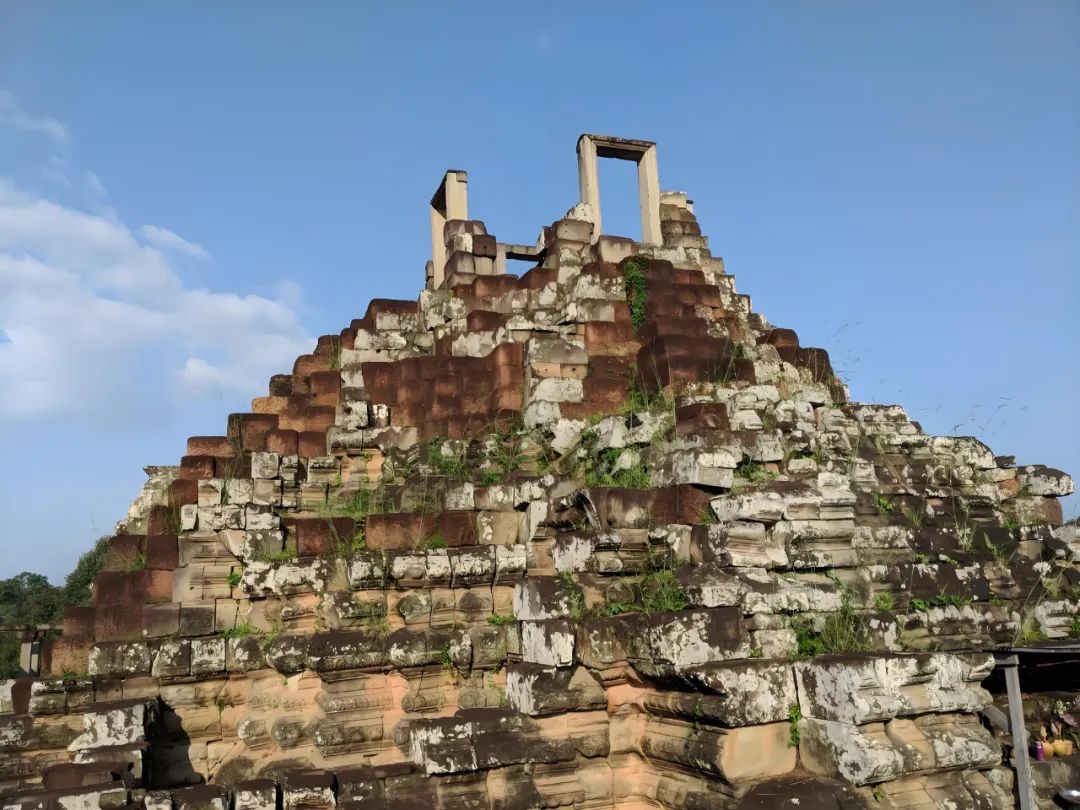
In addition, the most special thing about Bafang Temple is probably the worship guide at the East Gate. The total length is 172 meters, supported by three rows of stone pillars about 1 meter high, and stone slabs are laid on it to form a "air corridor". This should be the most cost-saving way to create a sense of sacredness, and it is quite similar to the scene in "Temple Escape".
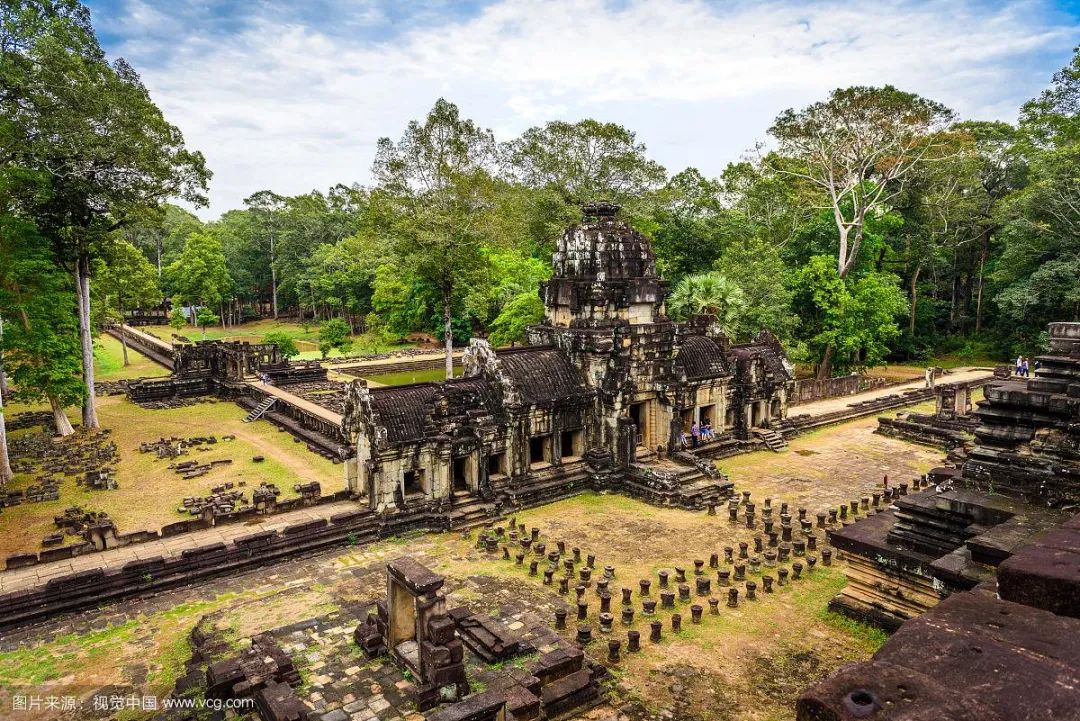
If you really can visit Bafang Temple, you will find that there are a large number of stones scattered on the open space around the temple, with marks on it. This is also a great regret for Bafang Temple. In 1960, France began to restore Bafang Temple and numbered each stone. However, during the Khmer Rouge rule, the numbered drawings were destroyed and the restoration personnel were evacuated, resulting in many stones being unable to be accurately restored and could only be piled on the ground, which unfortunately became the "most difficult puzzle of civilization."

The picture shows the guide road at the front of Bafang Temple
Angkor has been in troubled times since the thirteenth, and it lasted for nearly half a century before it came to an end. At this time, the throne had been handed over to the eighteenth. Not to mention whether he was the greatest monarch in Angkor's history, but at least he was the most ambitious monarch. He called himself the "Sun Guardian God" and pushed the Angkor Dynasty to its peak through frequent military operations.
During the eighteen reign, Angkor directly ruled Champa, and his territory reached Myanmar in the west, the South China Sea in the east, and the Malay Peninsula in the south, becoming the most powerful country in Southeast Asia. Therefore, some scholars call Eighteen "Napoleon of Cambodia". Not only that, Shiba also devoted his whole country to building the world-famous "Angkor Wat (Little Angkor)", which amazed the whole world, but his original purpose was only as his own tomb, which was enough to show his great ambitions.
Little Angkor is a building in the late 18th period and has a lot of content. Let’s talk about it in the next article. At the end of this article, let’s talk about several temples built at the same time.
Beng Mealea
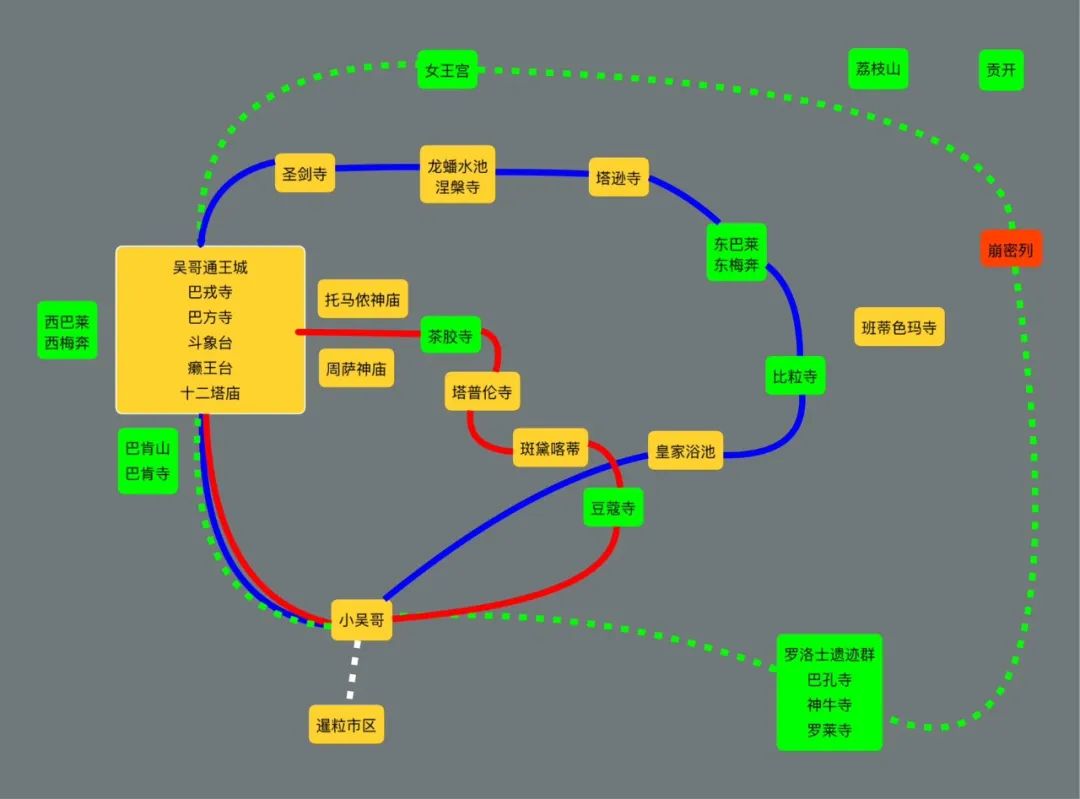
Benmile is the farthest attraction in the outer circle of Angkor tour route, 40 kilometers away from Little Angkor. It was built during the eighteenth reign, slightly earlier than Little Angkor. Its architectural style is also highly similar to it. Some say that this is the "prototype design" of Little Angkor, and the experience of building the Benmi Line has been directly used in the construction of Little Angkor.
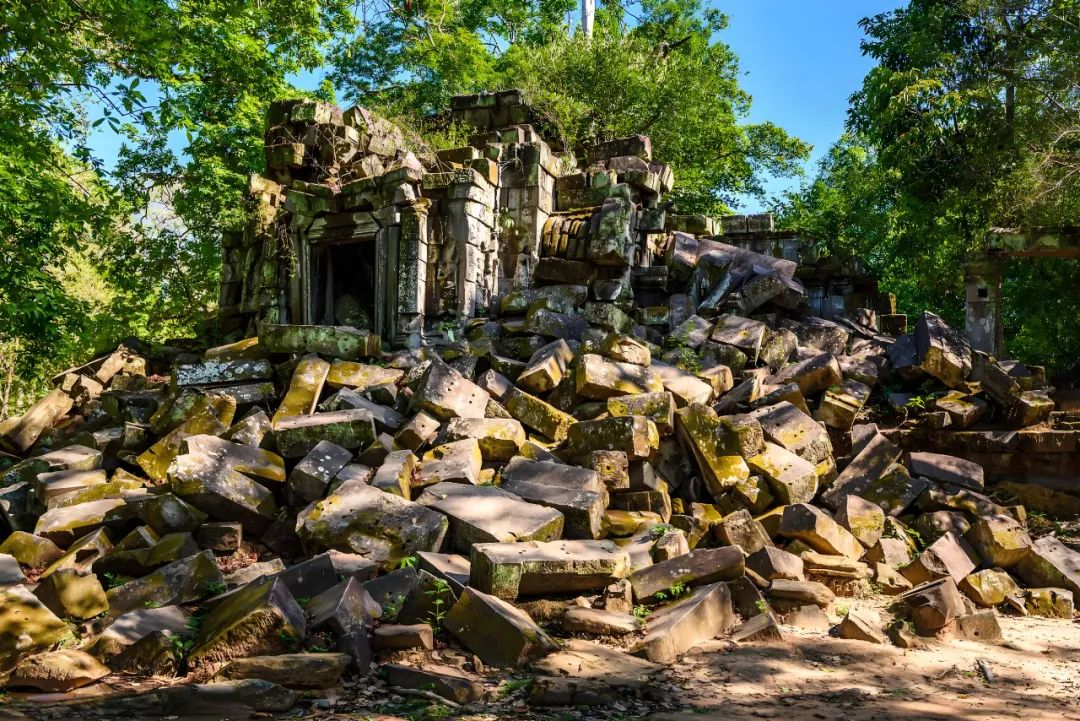
The Benmi Line is a large scale, with an outer periphery of a moat that is 1.2 kilometers long and 0.9 kilometers wide, slightly smaller than that of Little Angkor. There is a three-story corridor structure, with a narrow and long guideway connection between the corridors, and there are many Sutra Pavilions and lotus ponds next to the guideway. The central district has five familiar towers, with a symmetrical cross-shaped layout, and worships the Lord Shiva. Apart from this, there is nothing more to say, because the Benmi Line has not been built or repaired, and all the buildings have been destroyed and collapsed, becoming a ruin.
The reason why the unfinished Benmi Line is still a mystery. It may be that the climate conditions are harsh, or that people need to be drawn to build Little Angkor. Nowadays, you can still see many uncarved stone walls and foundations. Since the entire temple is made of sandstone, this material is easily weathered and eroded. In addition, various wars and plunders in history have caused serious damage to the temple and it is extremely difficult to restore. Even during the Khmer Rouge, the area around Bengmiles was covered with landmines, and it was not until 2007 that it was thoroughly investigated. This makes Benmilie still look like he has just been discovered.
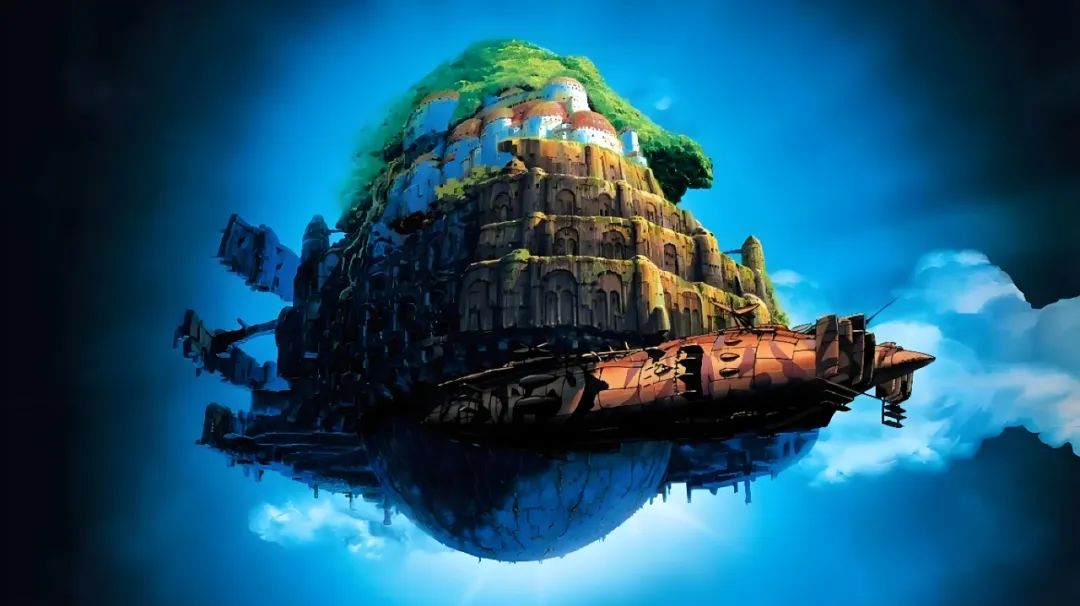
The collapsed stone walls, broken stone pillars, entangled tree roots, and dense weeds are in the dense column, as if nature and civilization are merged together, appearing ancient and mysterious. It is said that Miyazaki's "City of Sky" is inspired by this. Some people may think that this is the most primitive and authentic appearance of Angkor Wat, and is even known as the "most beautiful ruin".
Thommanon and Chau Say Tevoda
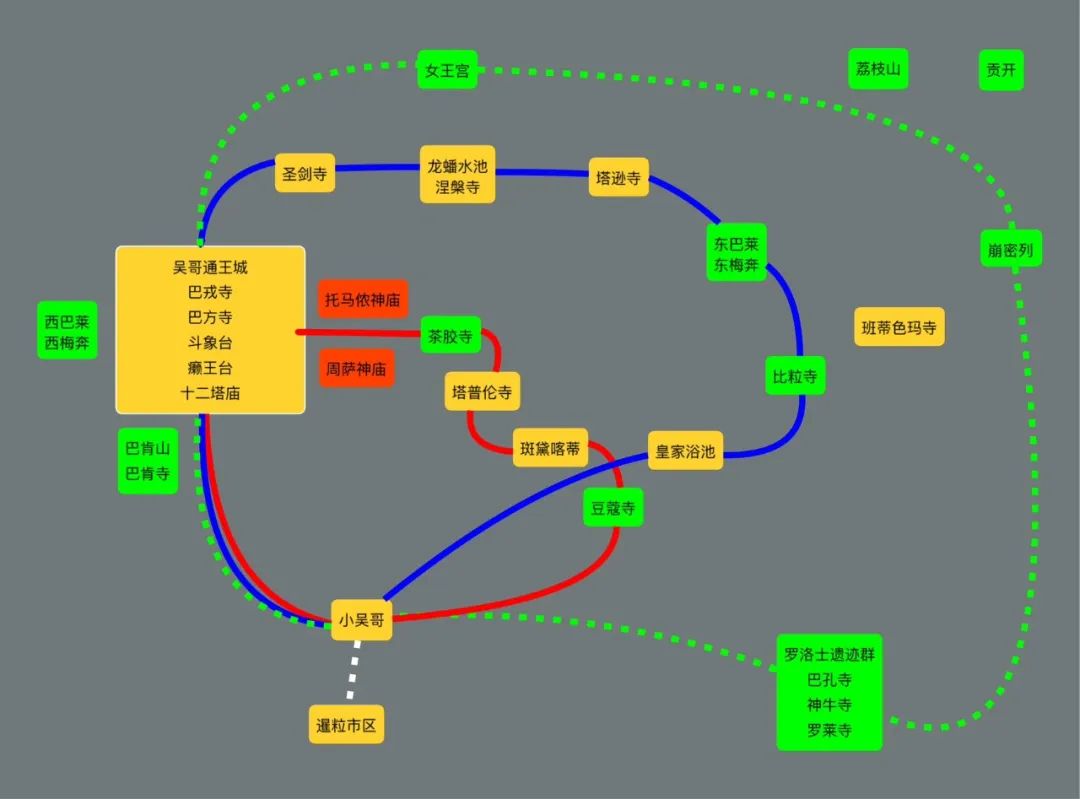
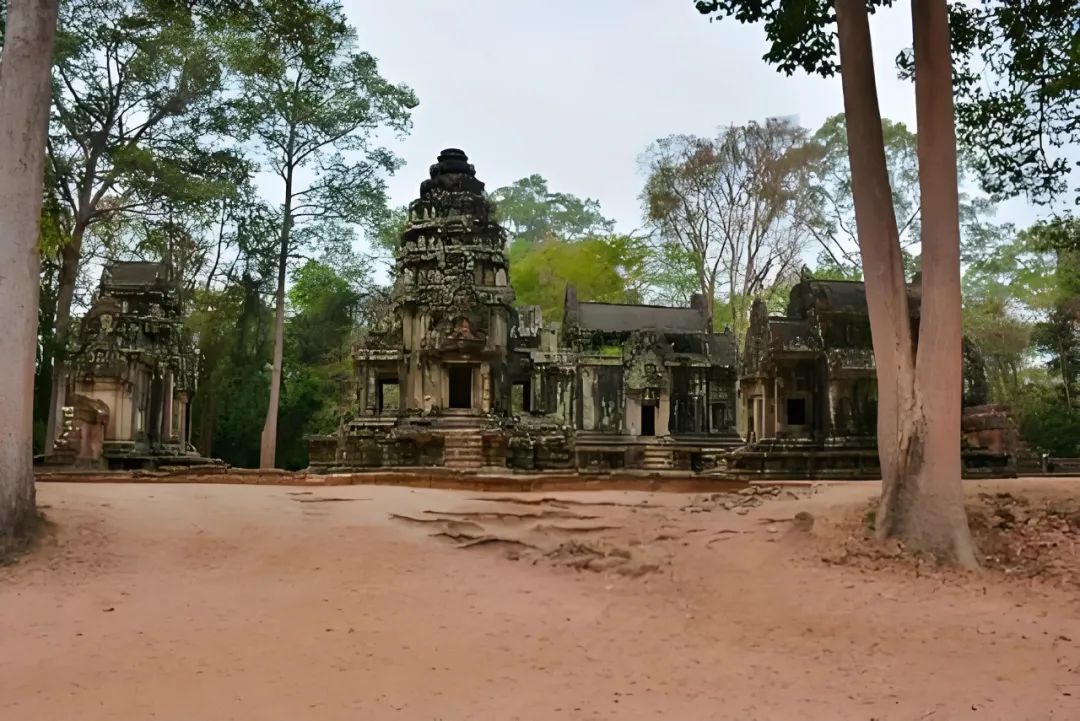
Both temples were built during the reign of the Eighteenth reign and are located on both sides of Shengli Road outside the Shengli Gate (East Gate) in the present Angkor Tongwang City. The Tomanon Temple is in the north and the Zhousa Temple is in the south, forming a north-south symmetry, only 170 meters apart, and is called the "Sister Temple". At the same time, the architectural layout and structural forms of the two are completely consistent, and both adopt a graphic design. The main body of the Tomanon Temple is 40 meters wide and the Zhousa Temple is 38 meters wide. Both can be regarded as a miniature model of Little Angkor 1:10. The difference between the two is that the mountain stone in Tomanon Temple carves the goddess "Devata", the one in the south tower of the Queen's Palace; while the Zhousa Temple carves the image of the god Hanuman in "Ramayana", which is said to be the prototype of Sun Wukong.
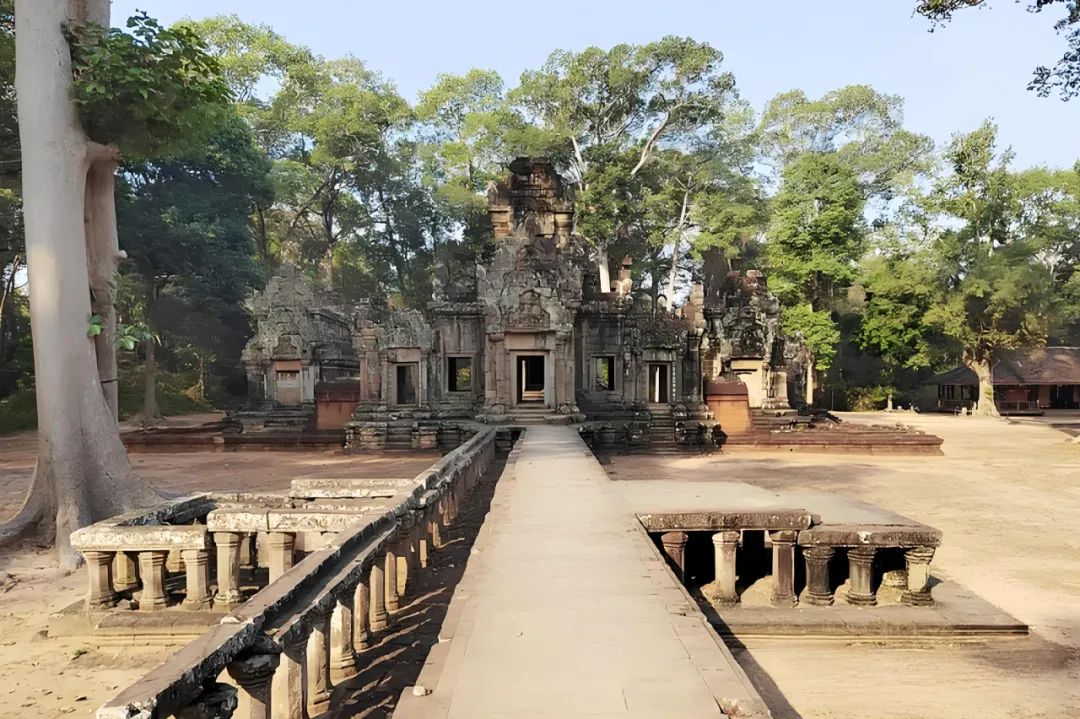
The bigger difference between these two lies in the repair method. The Tomanon Temple is relatively lucky, and it has not been destroyed on a large scale. The French Far East Academy completed restoration in the 1960s and preserved 70% of its original structure; while the Zhousa Temple was in a miserable state. When it was discovered, it was already a ruin, with more than 4,000 stones scattered on the ground. It was not until 2000 that the Chinese team launched the restoration, 3D scanning, numbering, and resetting each stone. The missing materials were filled with sandstone native to Laos, so as to "repair the old as it was", presenting a relatively complete Zhousa Temple. France's "repair of authenticity" and China's "repair of style" seem to be having a civilized dialogue across the Victory Road.
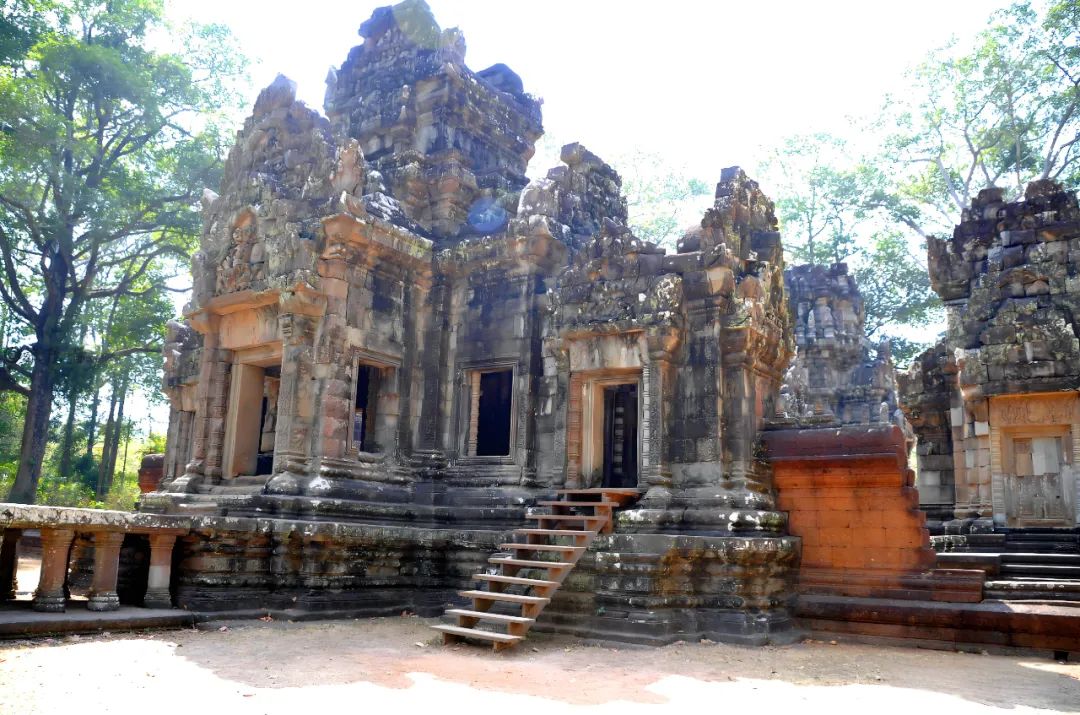
Okay, that's all for this article. I didn't expect that I could talk about so much about Angkor Wat. The next article should be the last one, so see you next article.
【Tail】
This article talks about the restoration of Angkor Wat and introduces a more professional book.
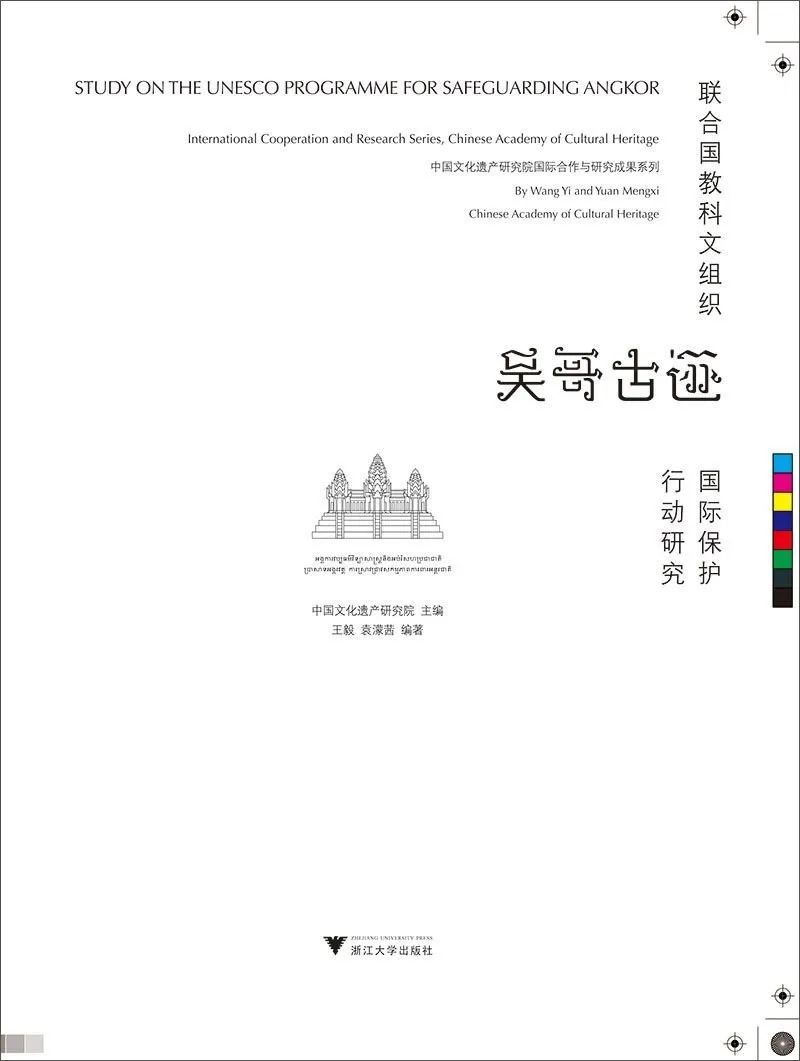
"United Nations Educational Science and Technology International Protection Action Research on Angkor Monument" written by Wang Yi and Yuan Mengqian. Wang Yi here is not the foreign minister, but a doctor of archaeology. He has long been committed to the conservation and research of Angkor monuments and has rich experience. This book is also more academic. From the application of Angkor Heritage, UNESCO intervened, established the Angkor Protection Administration in Cambodia, coordinated rescue restoration in various countries, etc., which recorded all the development process in a very detailed manner. Although "repair" literally means "repair and restoration", there will be many unexpected problems in actual operation.
For example, for temples, whether to repair as before or to keep the current state and only strengthen the temples is debated endlessly in the academic world. For local villagers, how to balance the balance between protecting historical sites and normal life, whether you can farm next to historical sites, whether you can build buildings, etc. In addition, Angkor Wat is an international tourist attraction, with a large number of tourists coming in, secondary damage, environmental protection, and ecological balance all issues that need to be carefully considered. This is discussed in detail in this book and is still very beneficial.
But after all, this book is still a professional book, which involves some documents about laws and regulations, and it is a bit boring to read.





